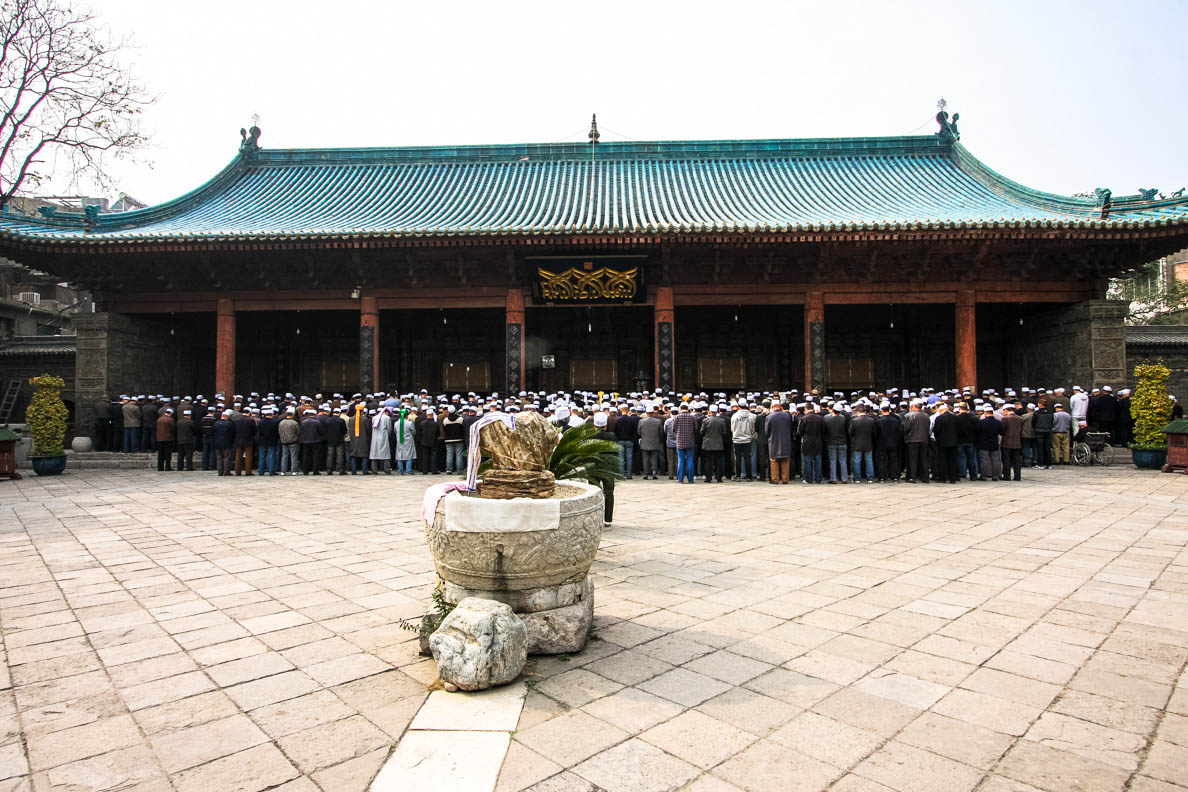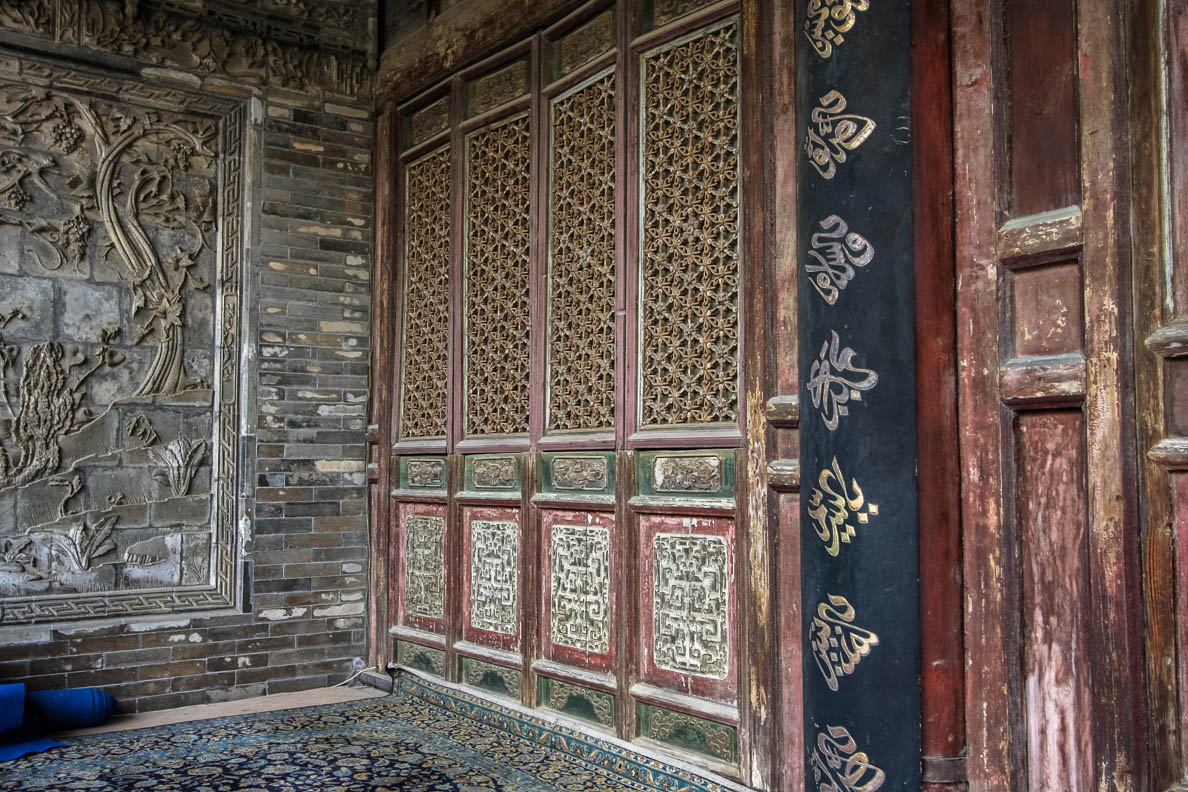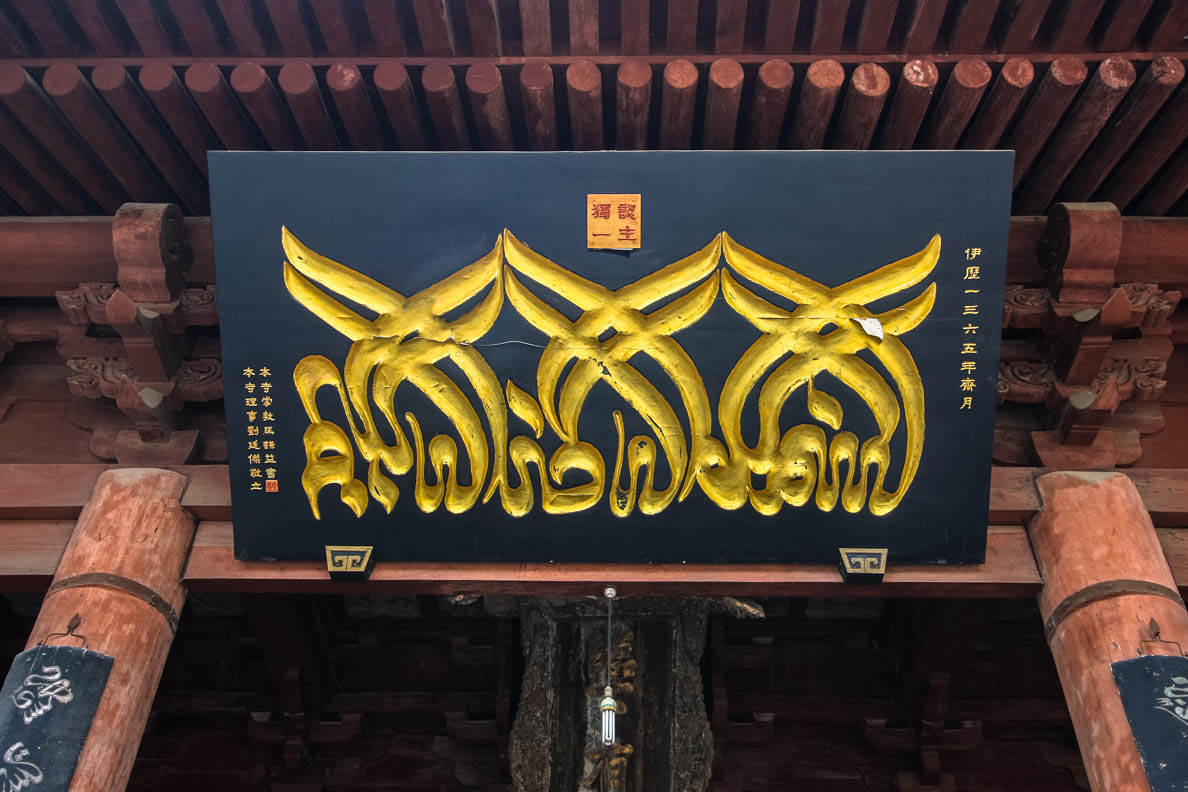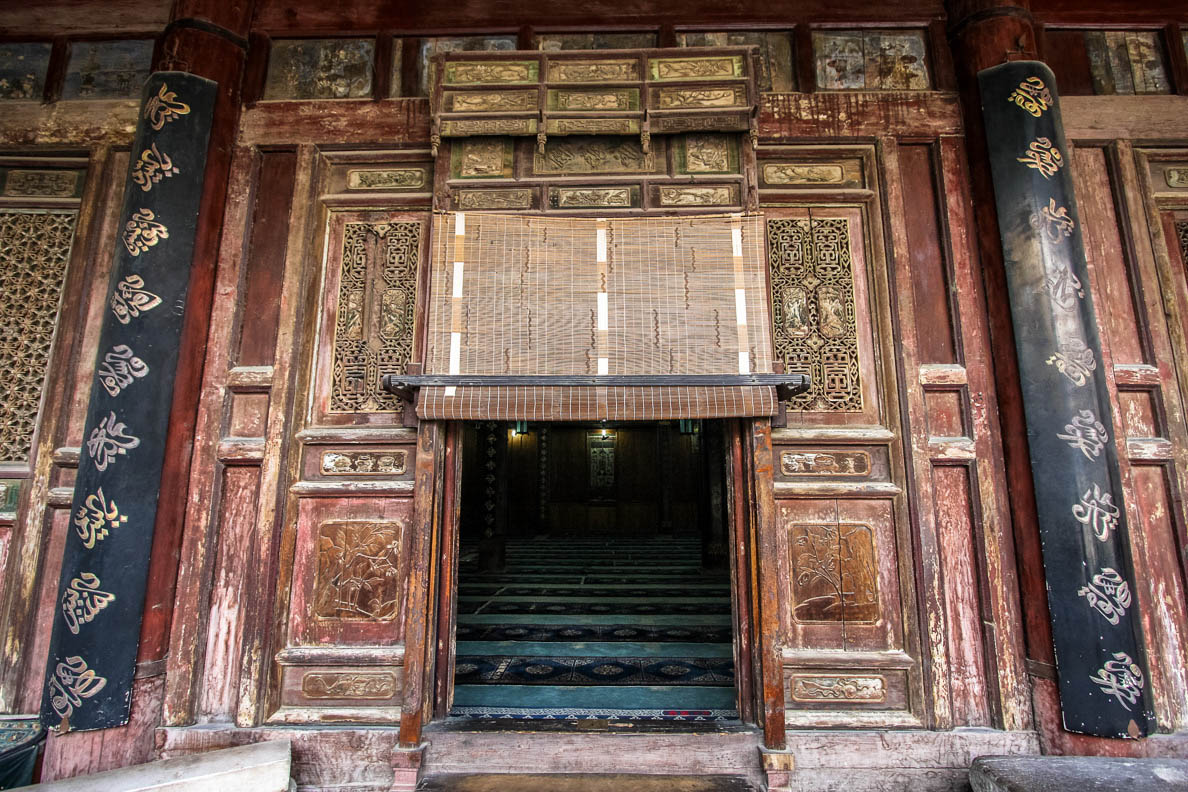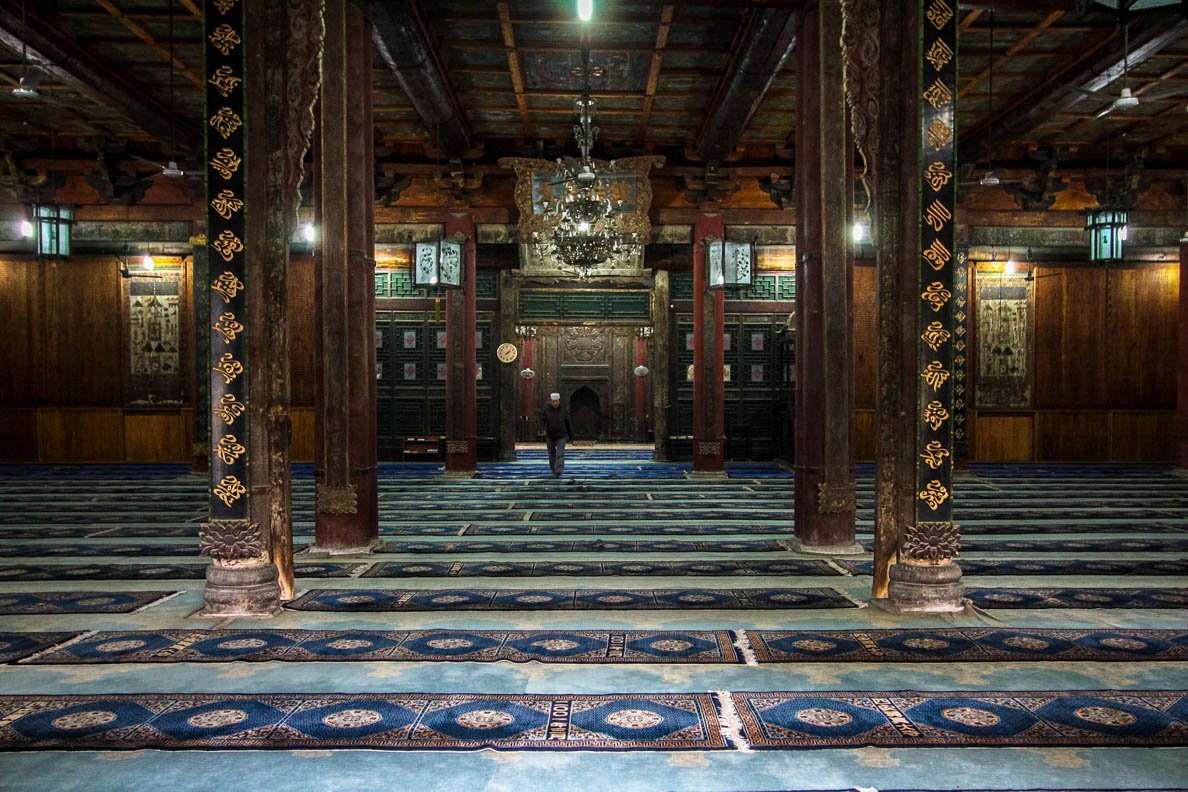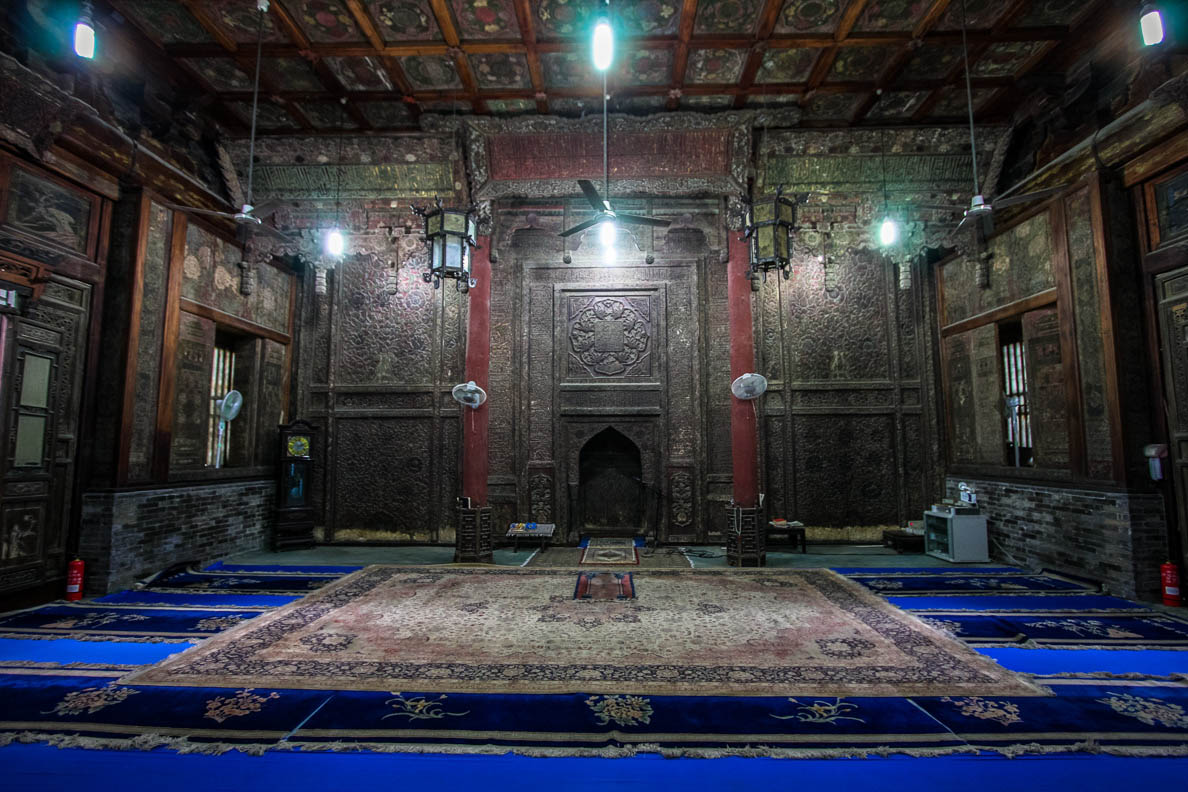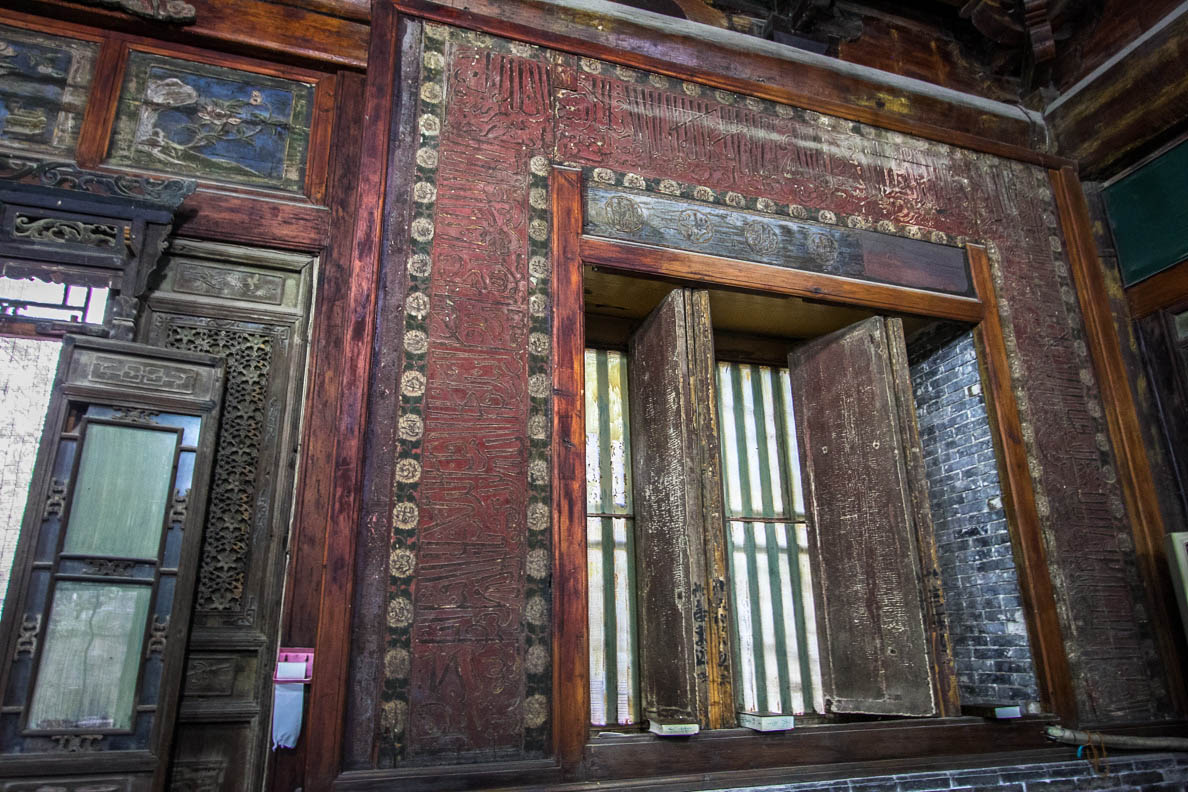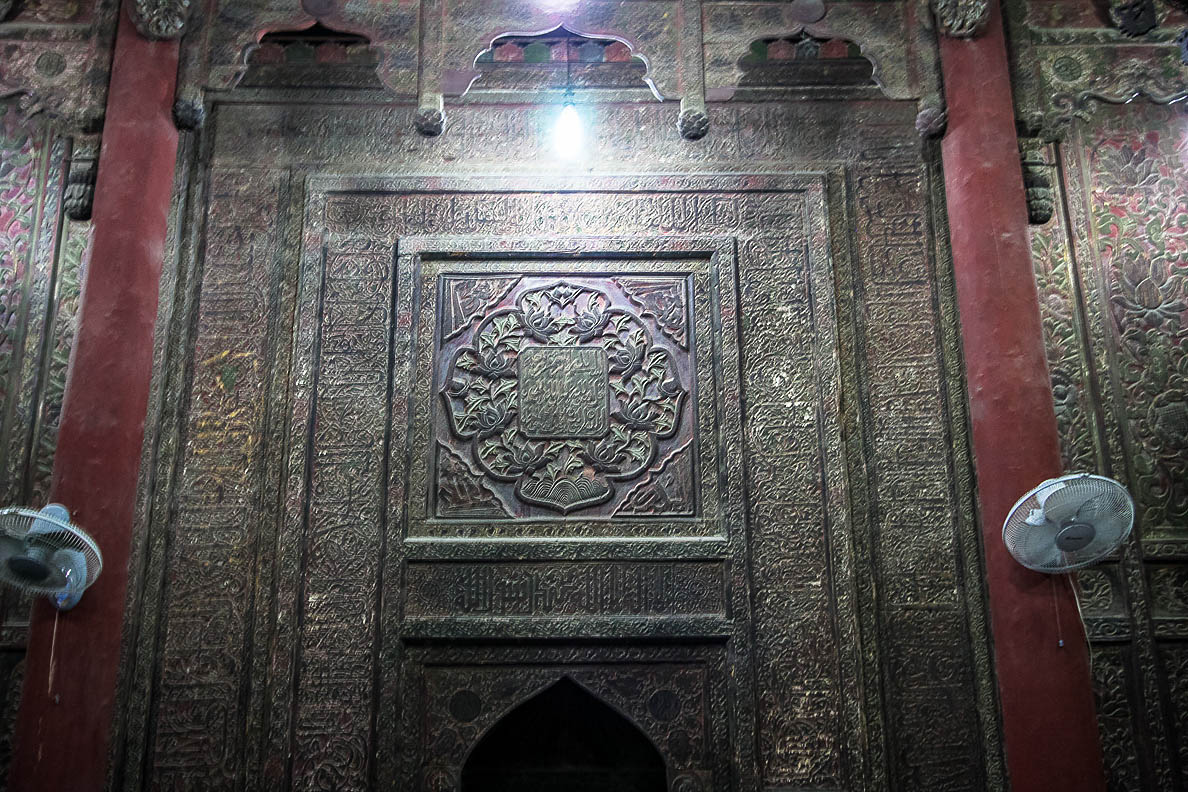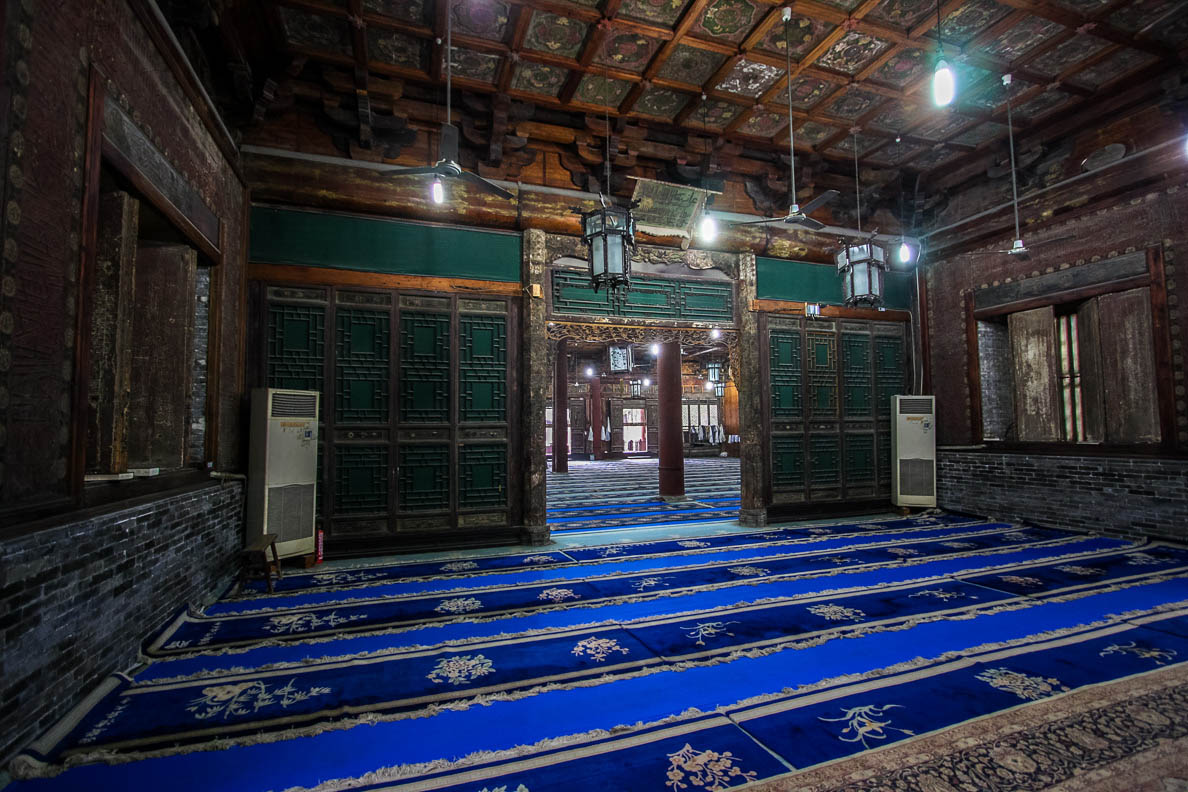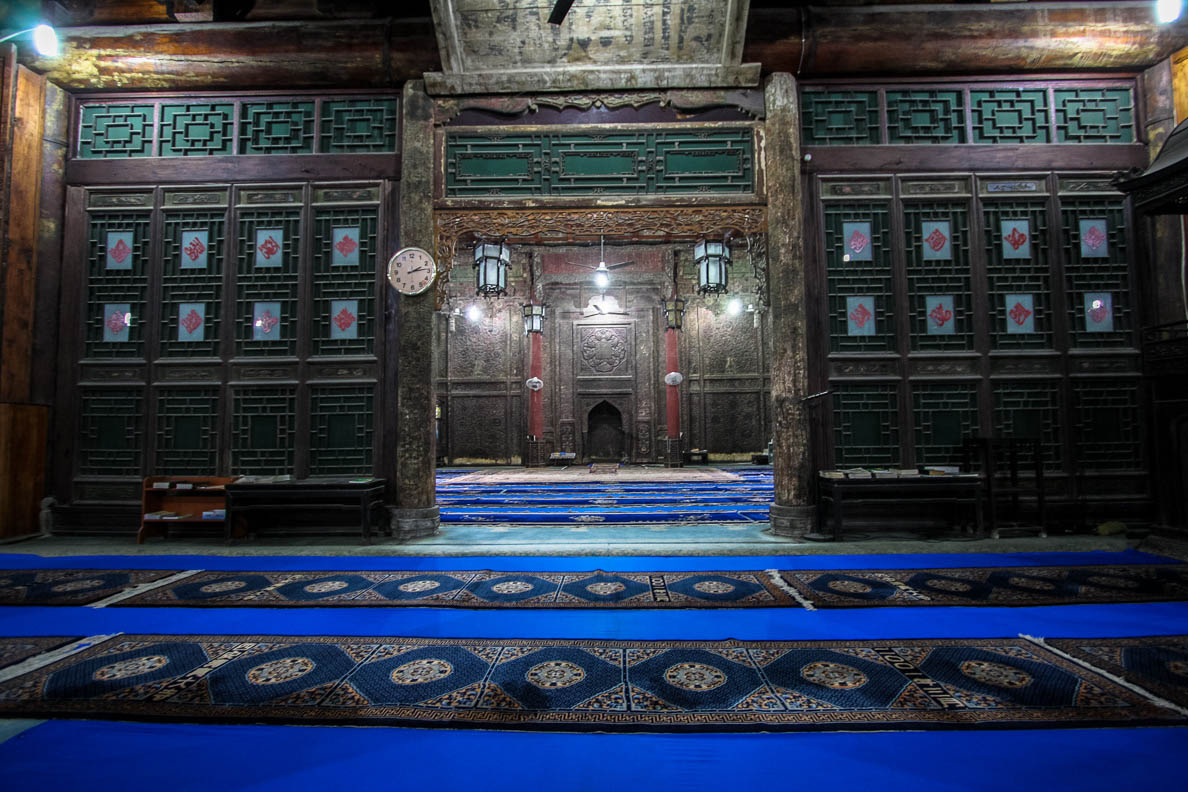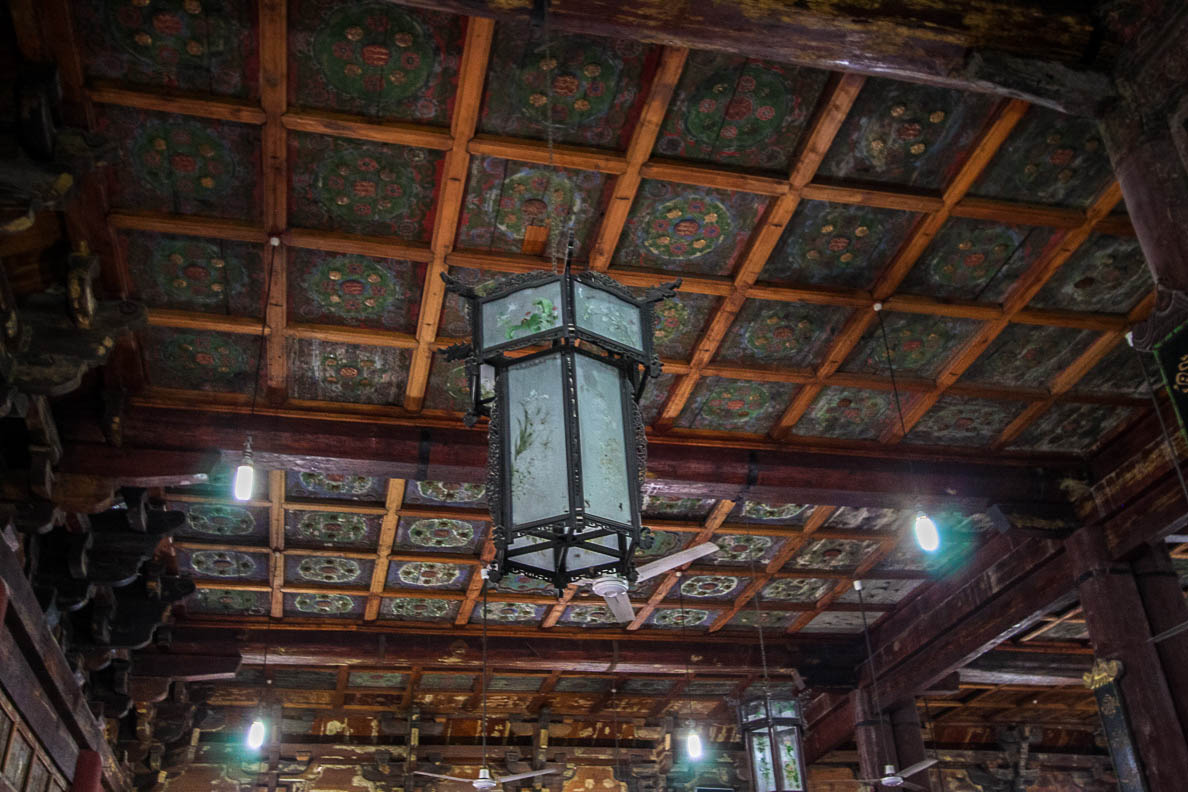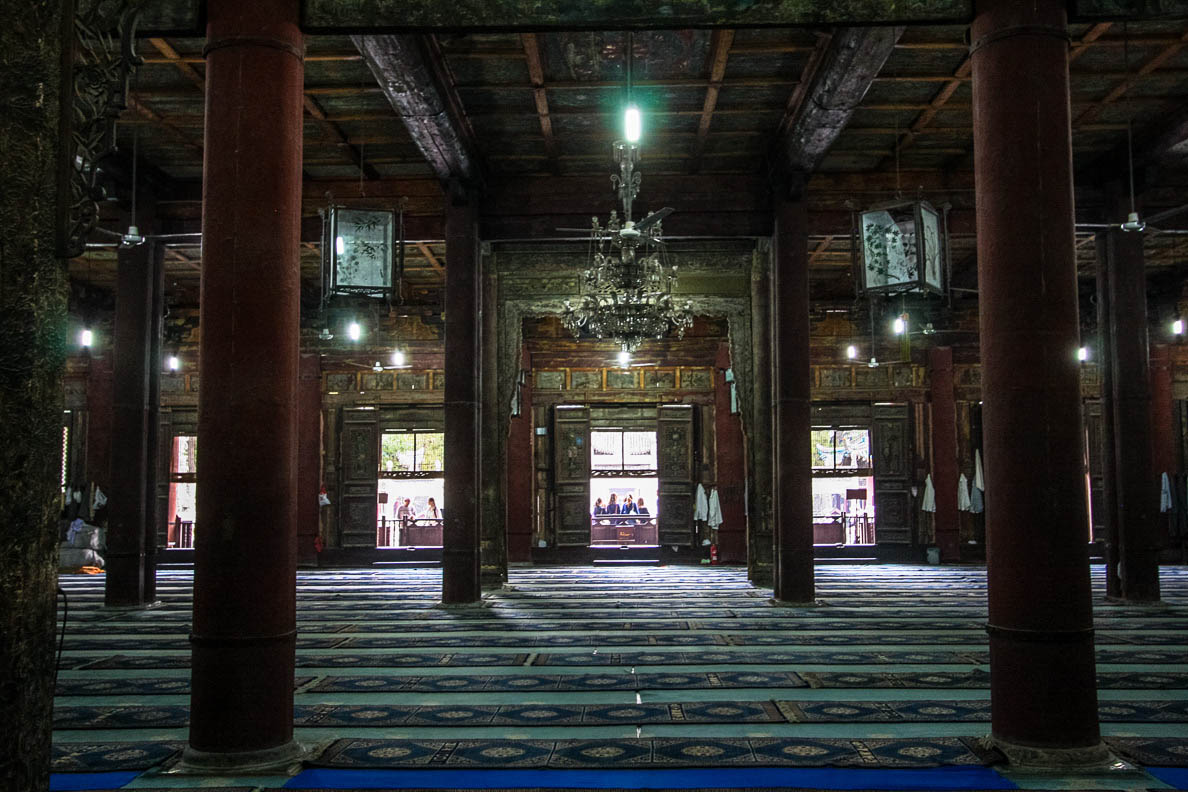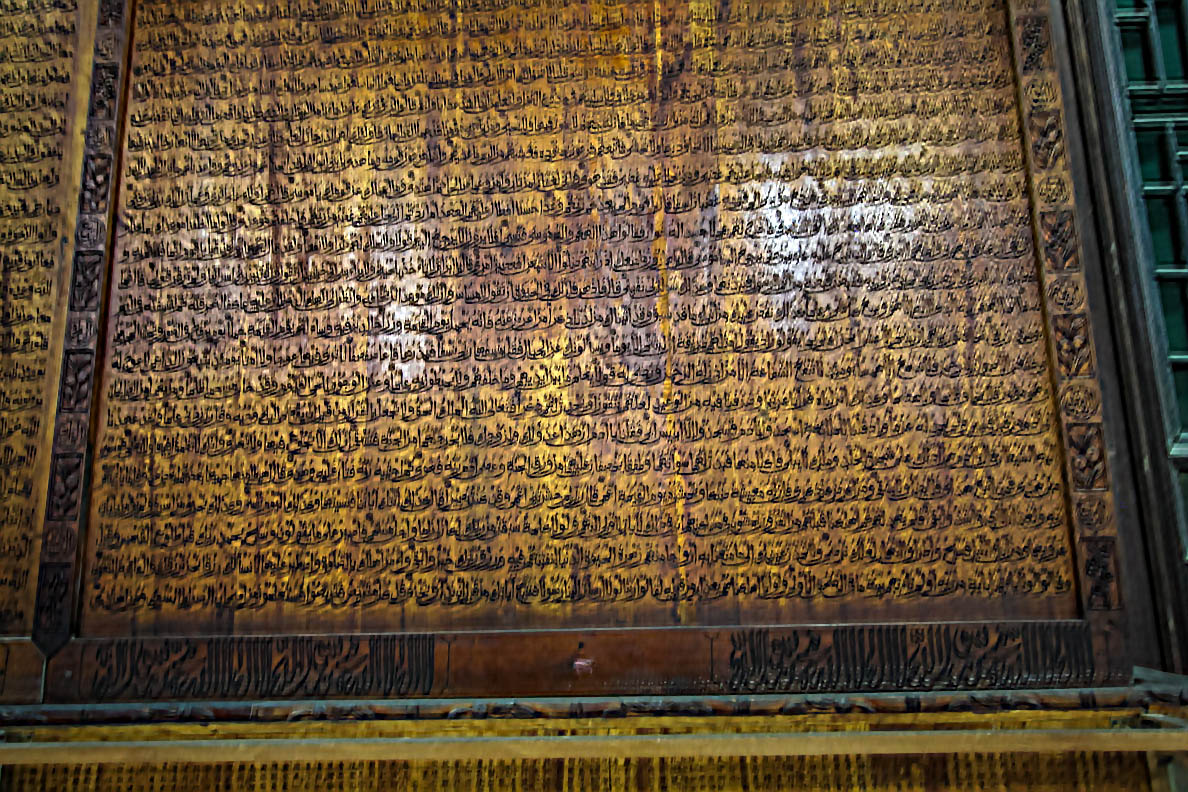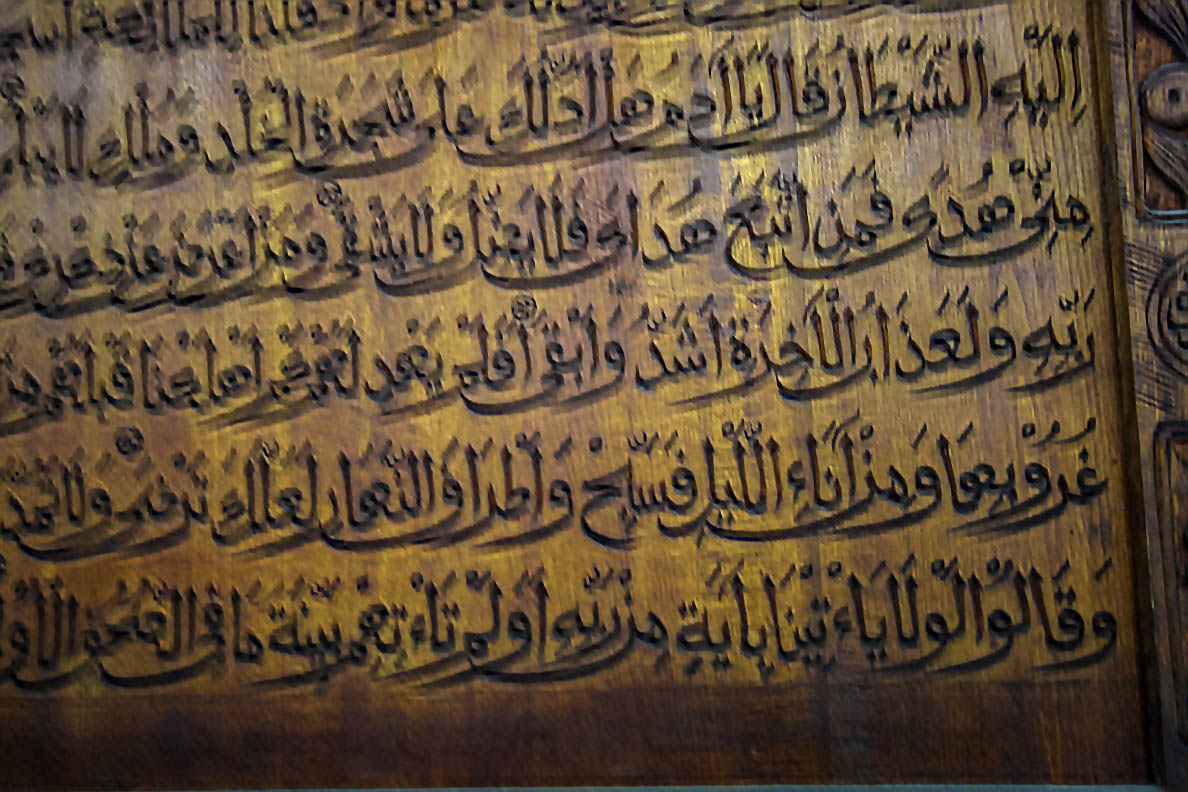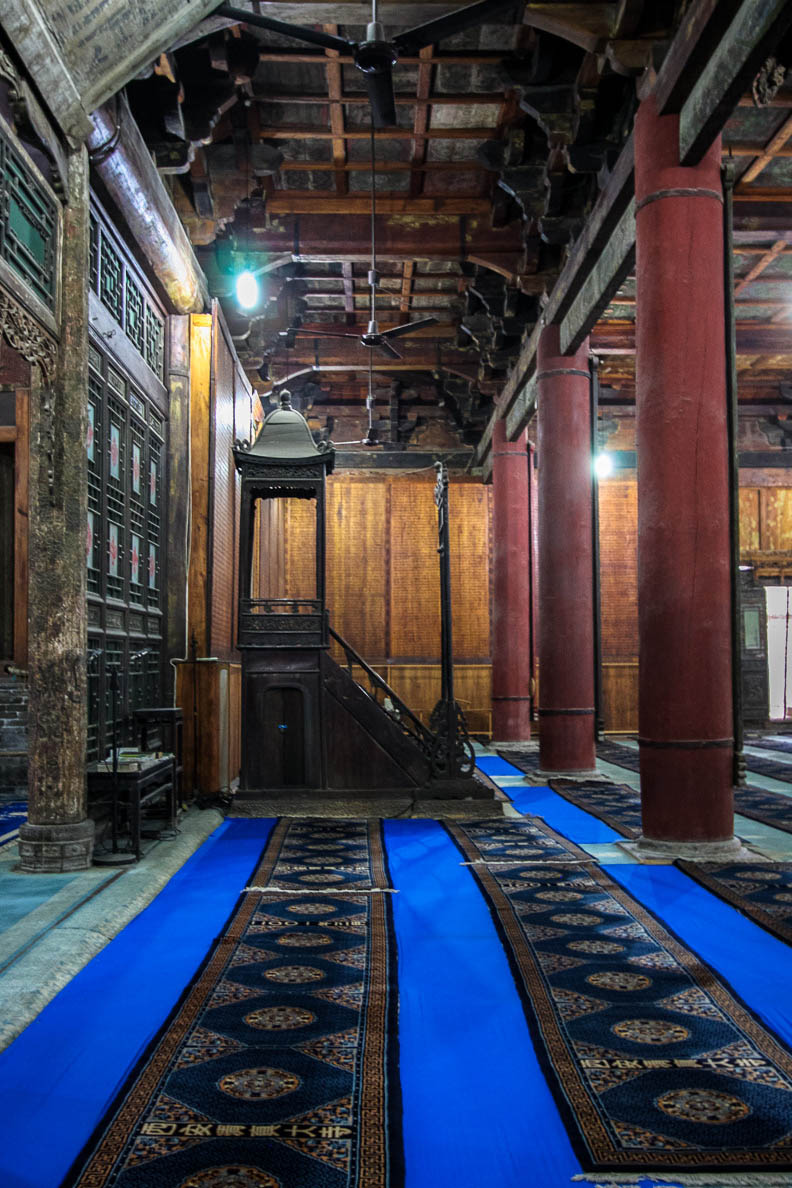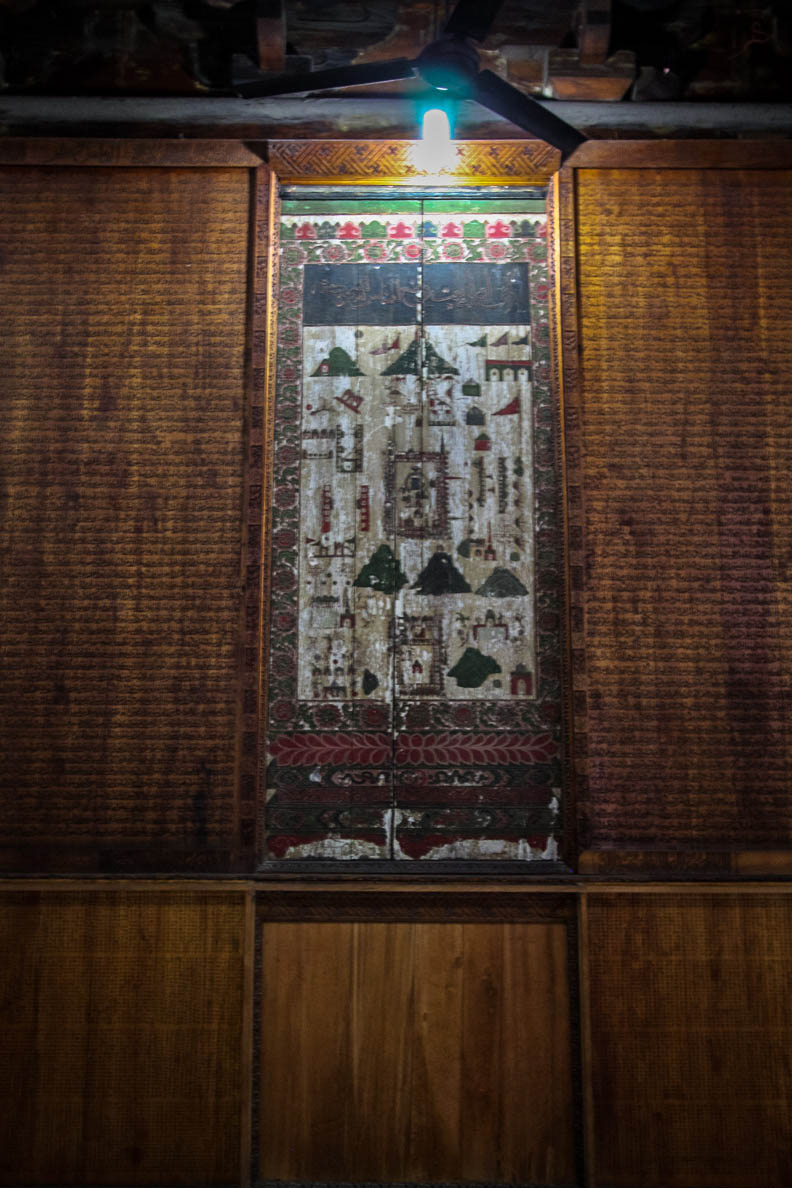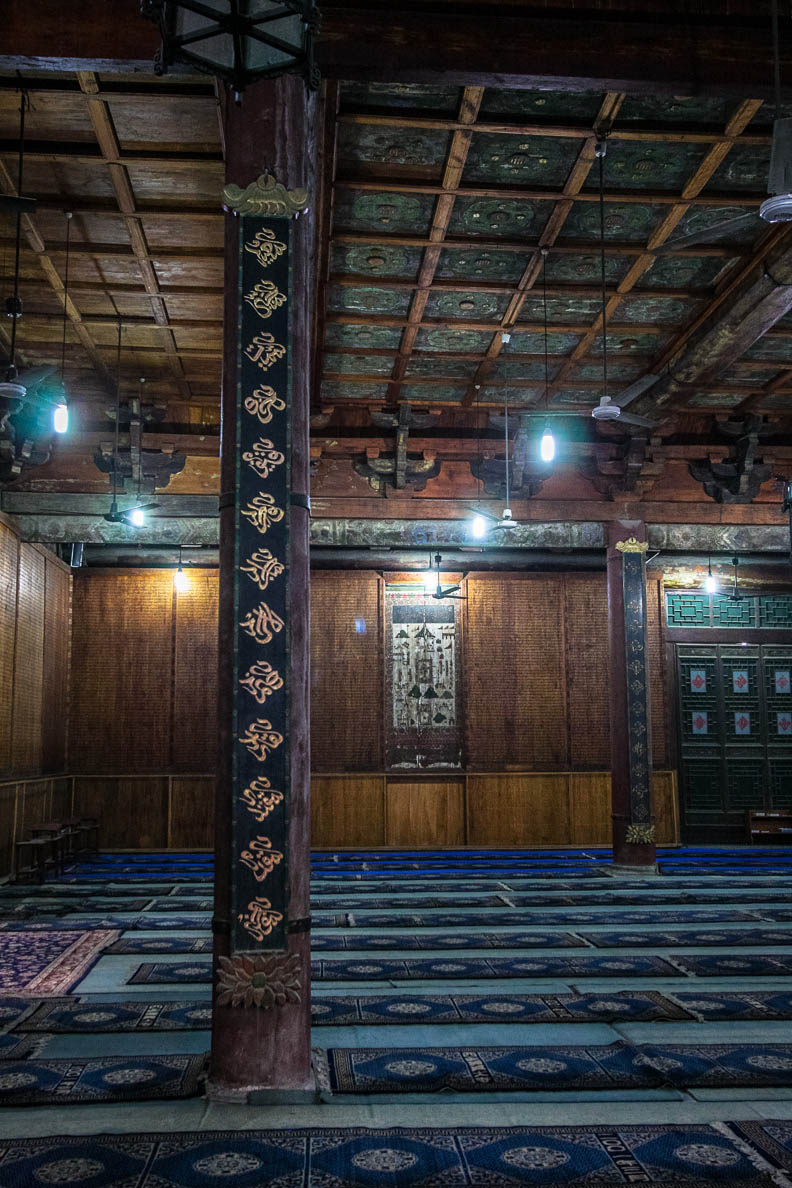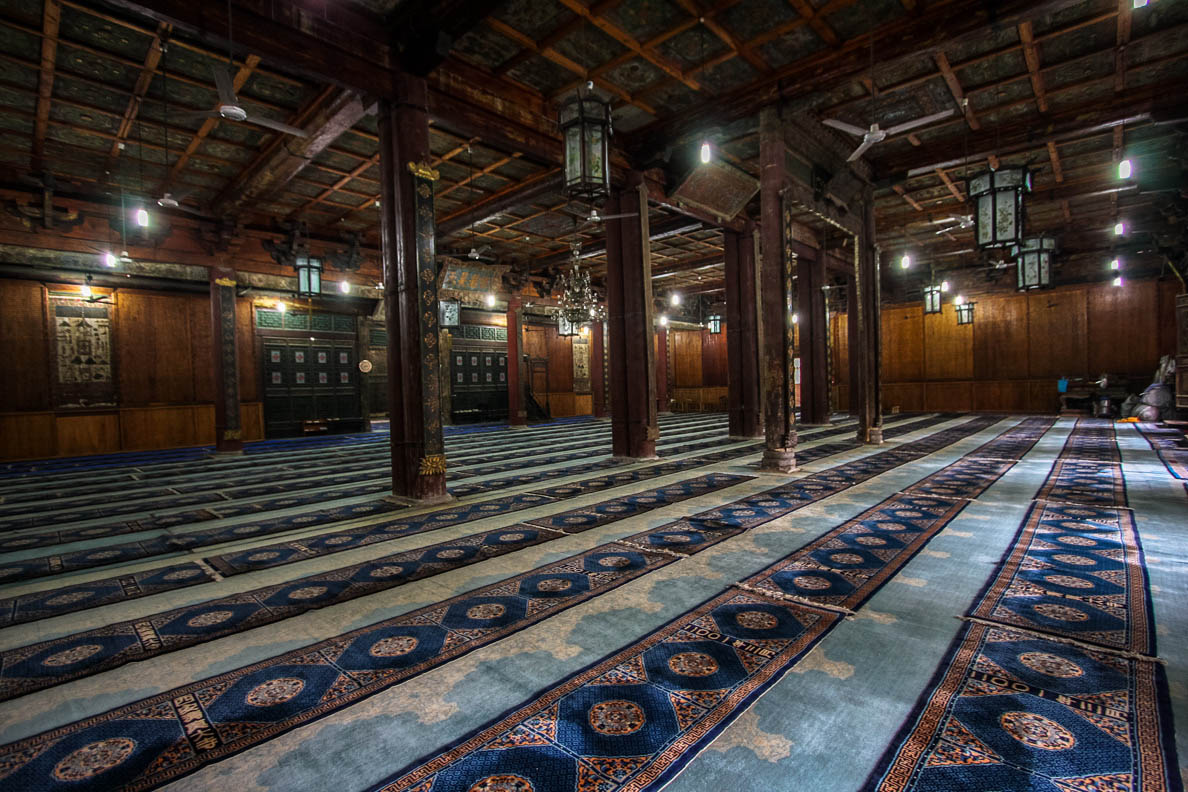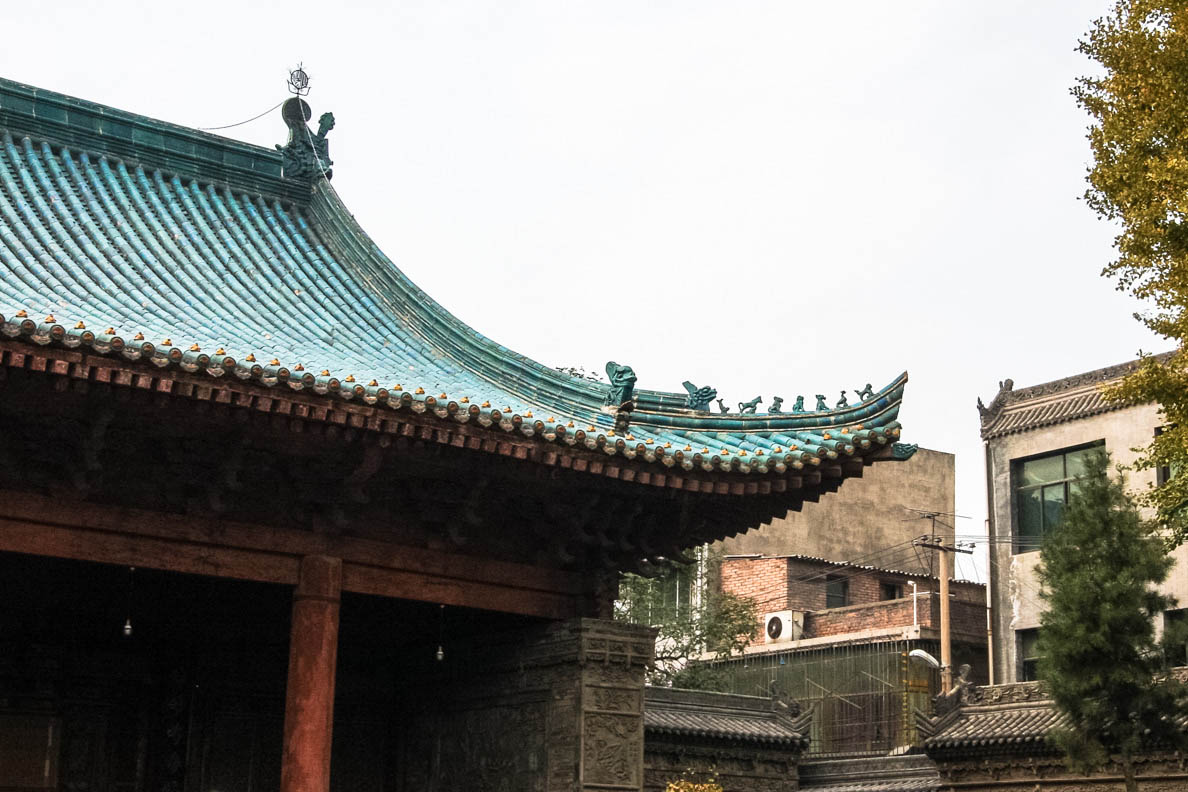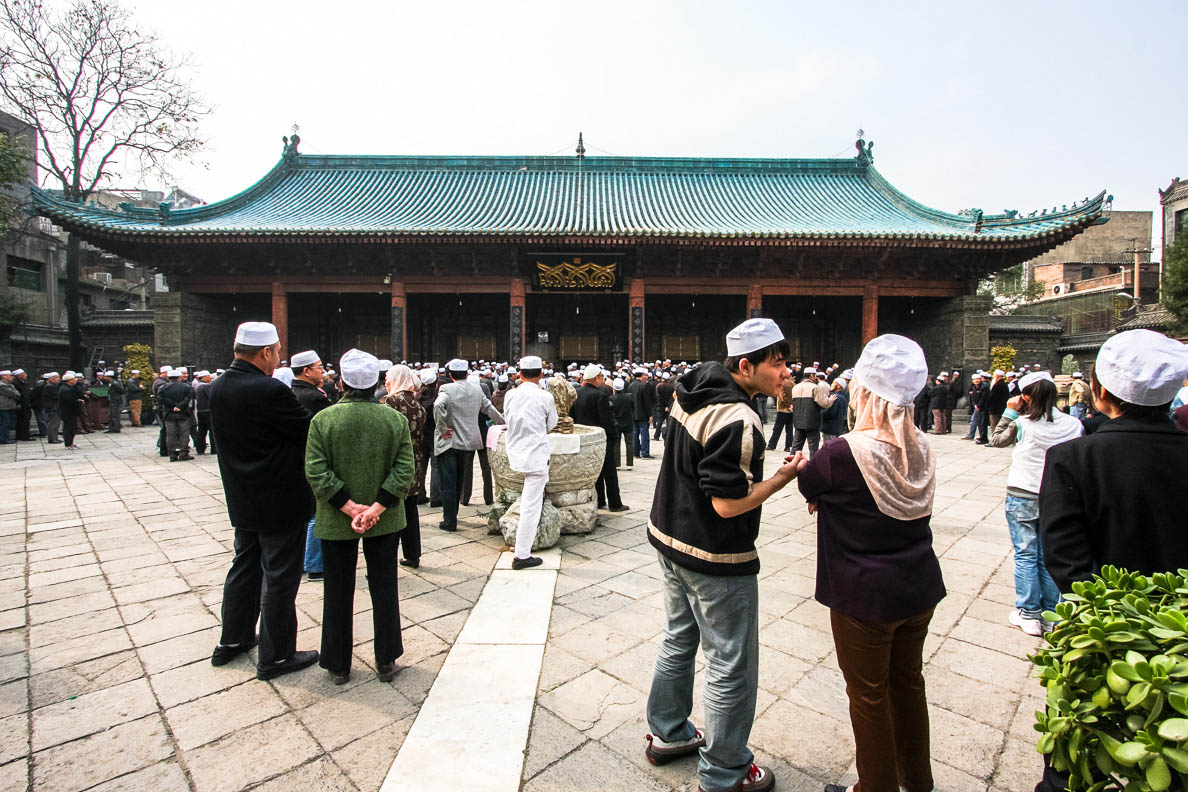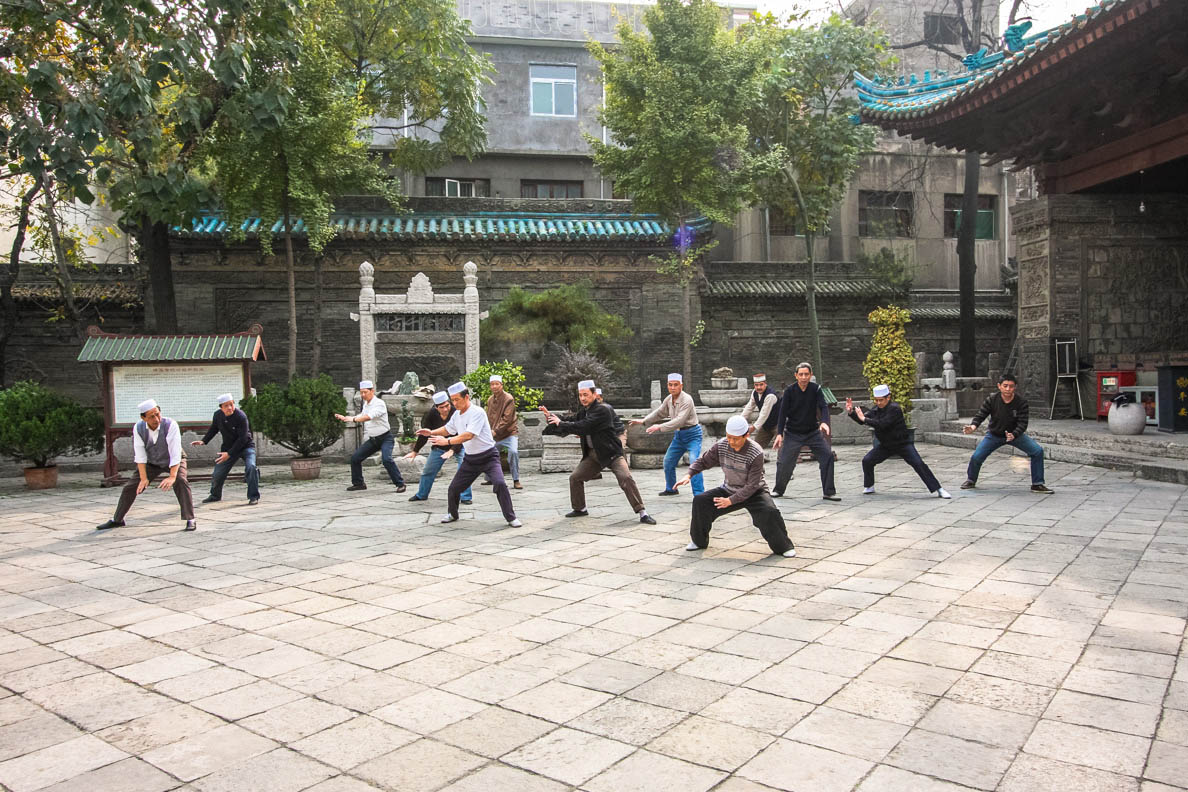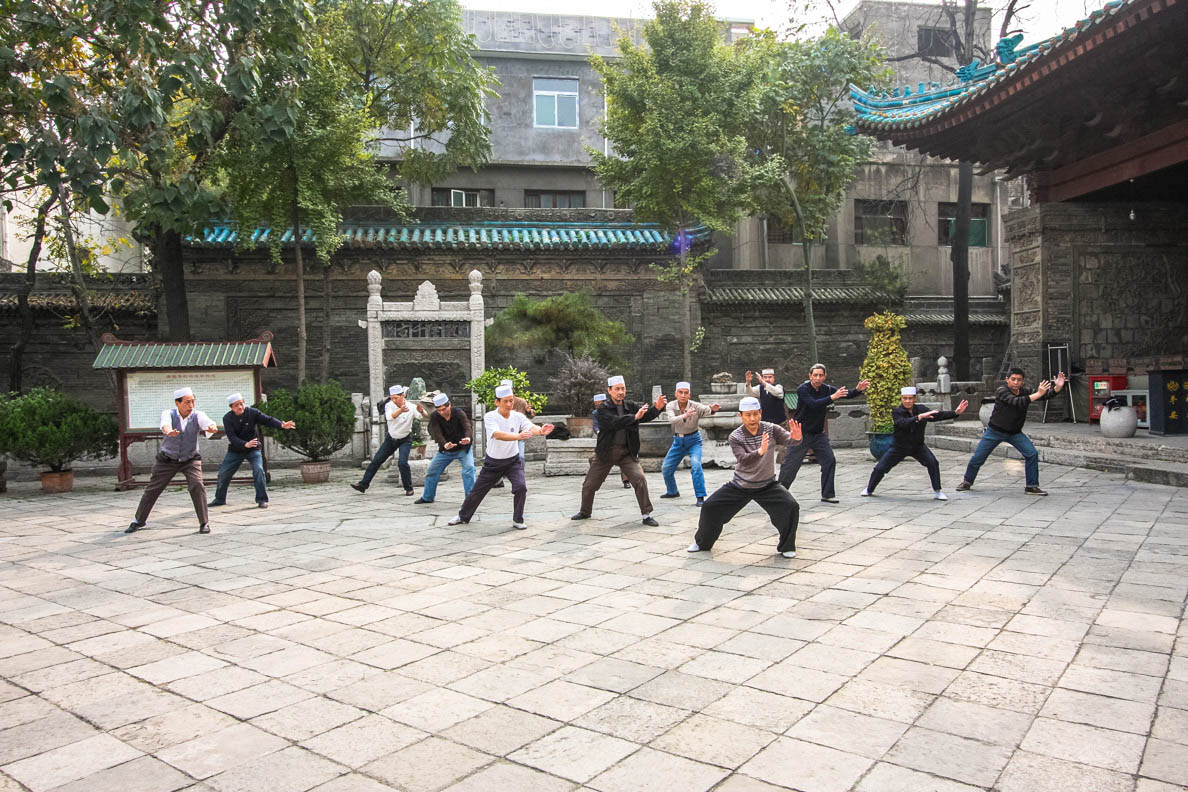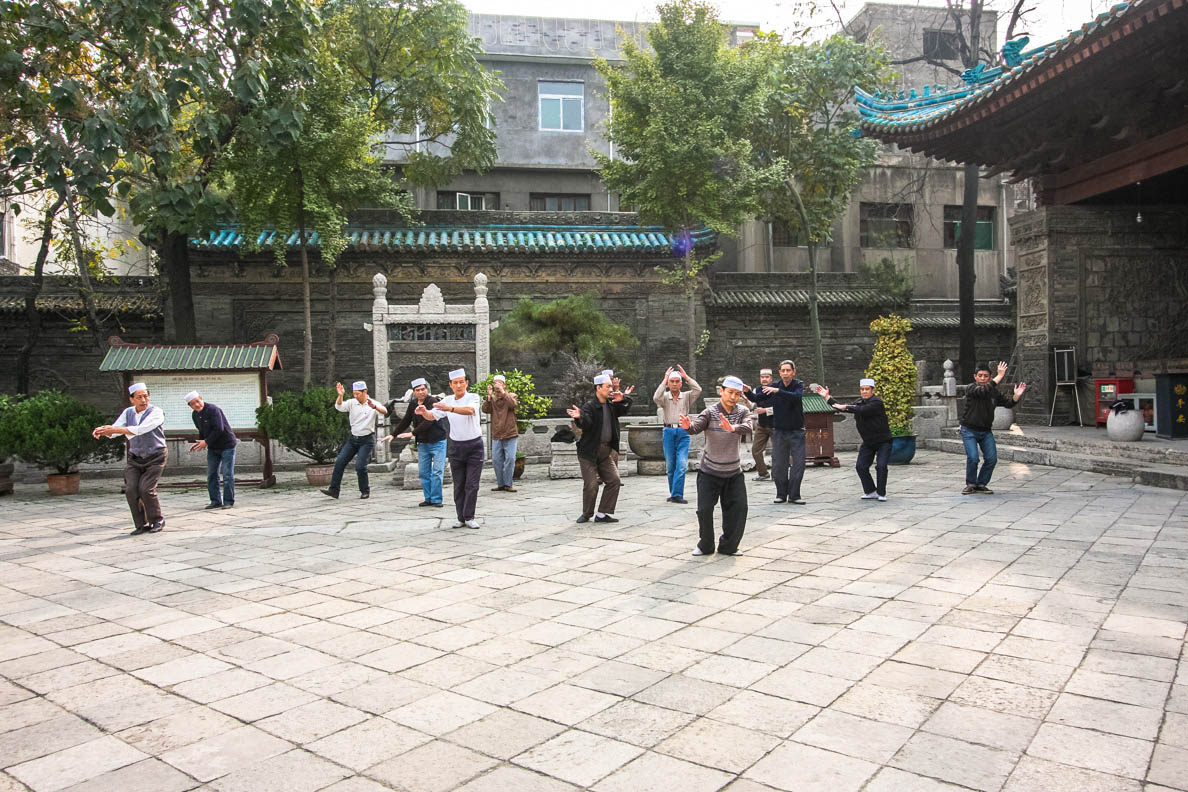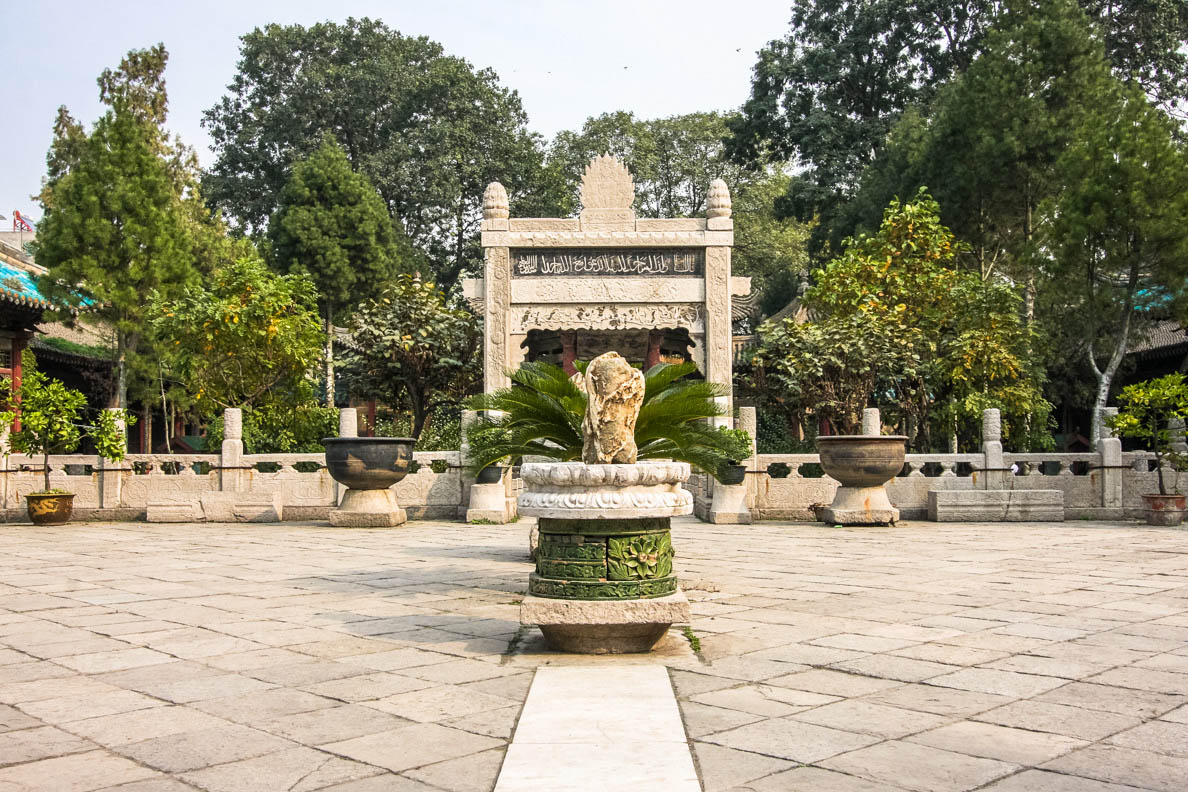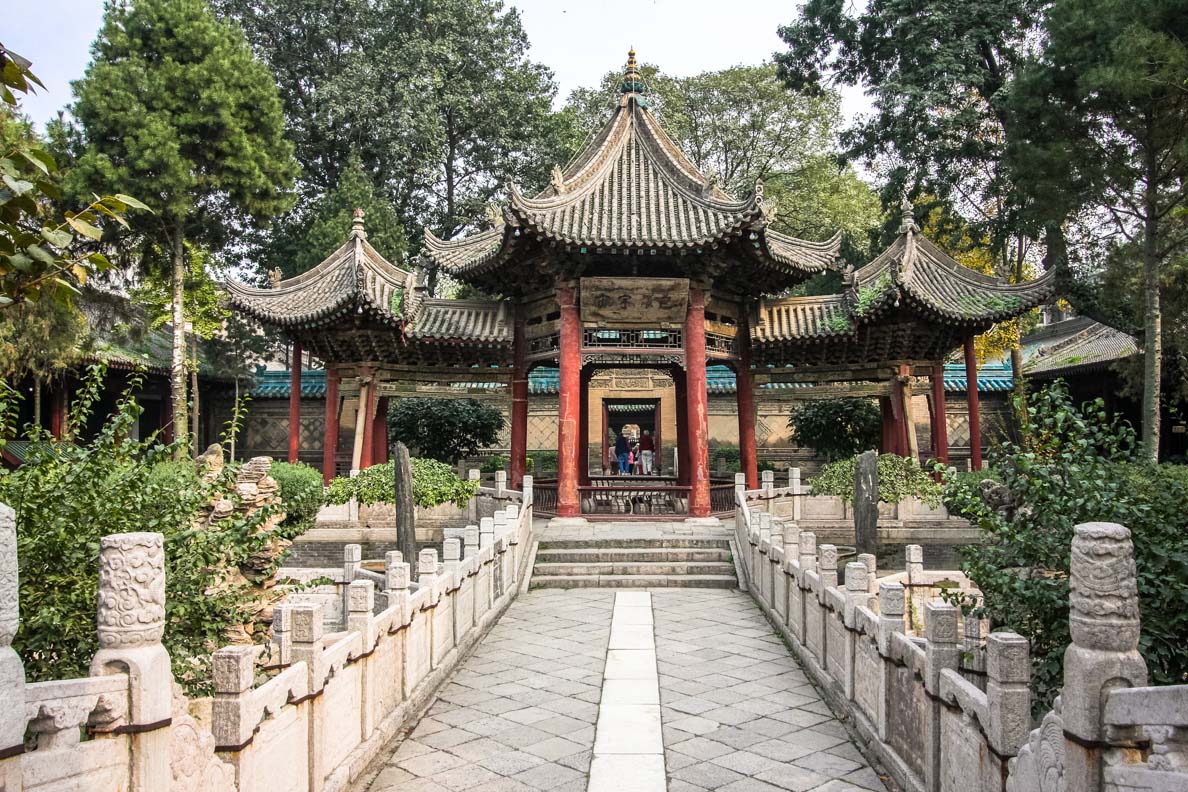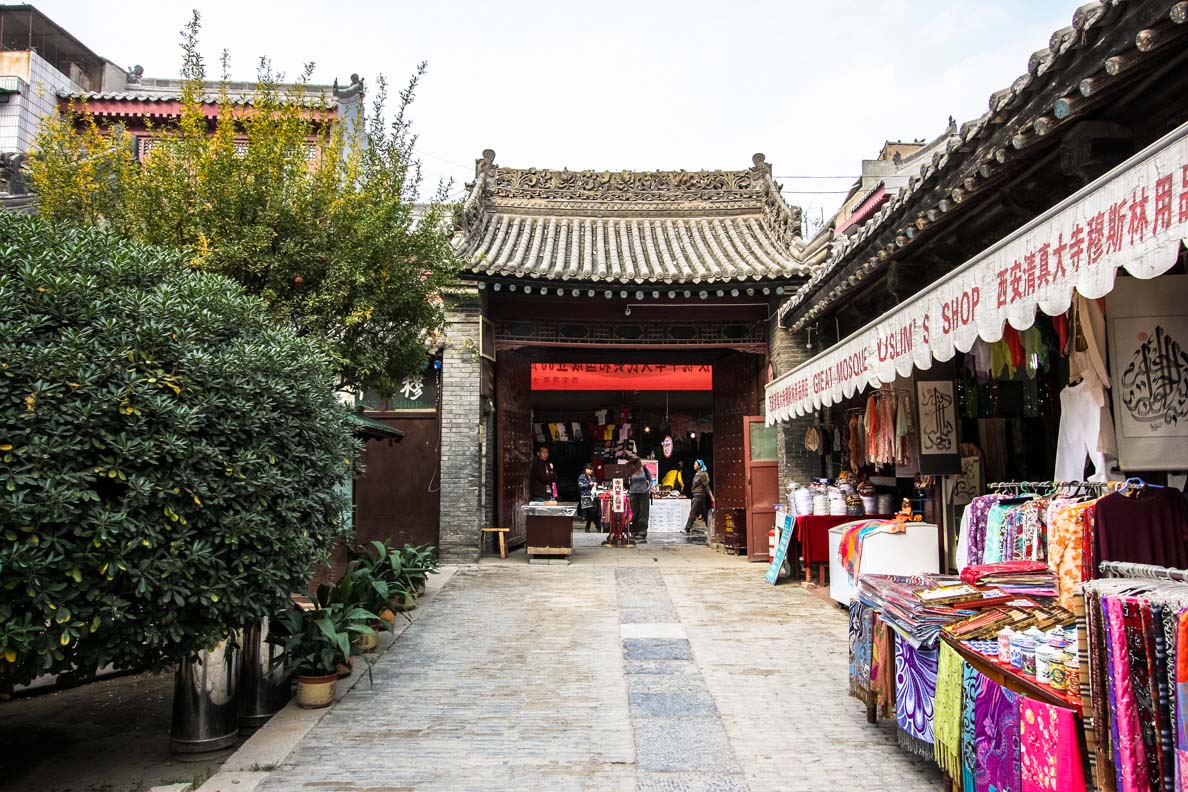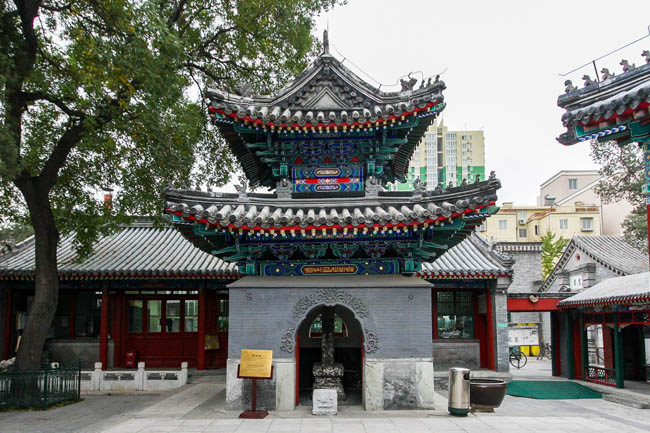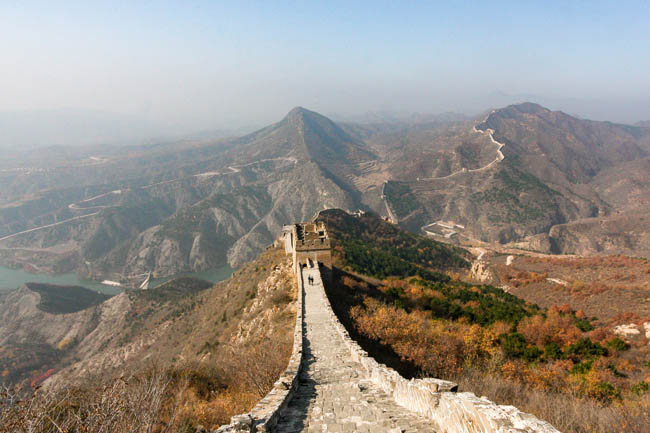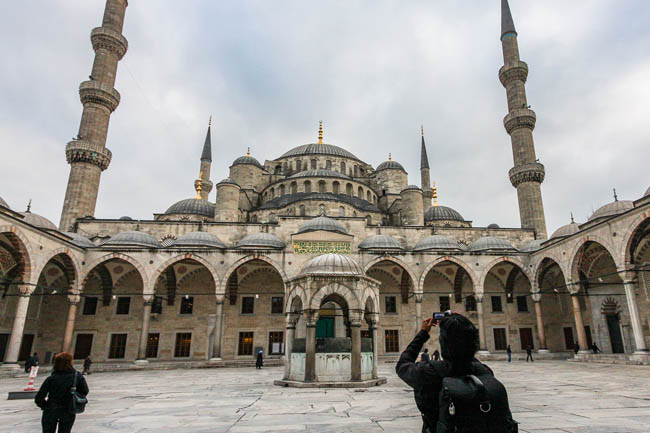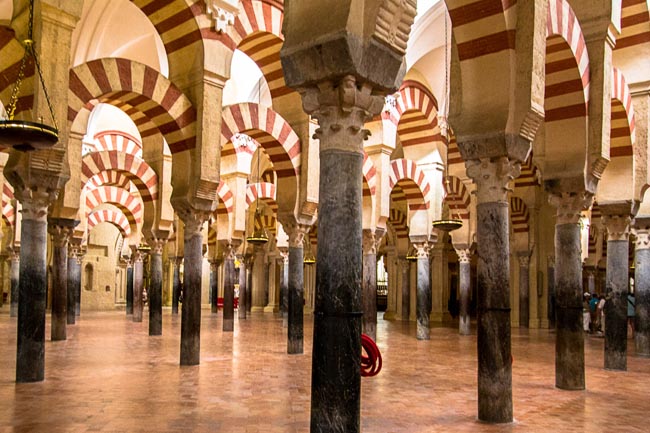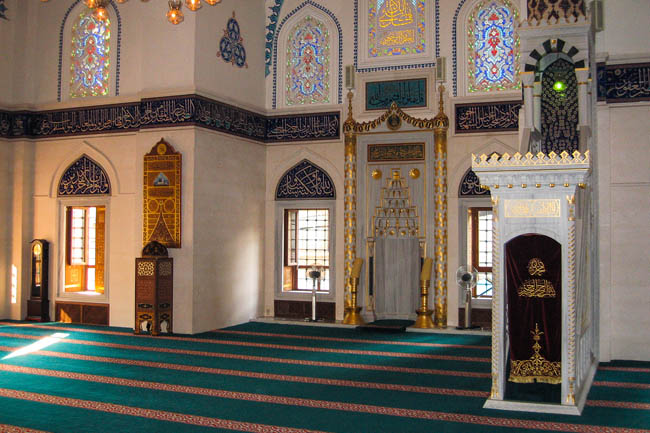CHINA
THE GREAT MOSQUE
OF XI’AN
西安大清真寺
October 2009 • Canon 40D camera
The Great Mosque can be found in the Muslim quarter of Xi’an, at the end of the narrow passage to Hu Jue Lane. Behind this wall, lies a peaceful oasis of tranquillity. The Great Mosque was first built in 742 AD during the reign of Emperor Xuanzong 唐玄宗 of the Tang Dynasty 唐朝 8th Century. The Mosque is said to have been developed into it’s current form by Zheng He 鄭和, a famous admiral, diplomat and explorer from the 15th Century Ming Dynasty. It is the largest and best preserved mosque in China. Islam was introduced to China via Muslim merchants who settled down in the region. It’s interesting to note that the Great Mosque was established around 132 years after Islam was established in the Middle East. It’s a neglected part of Chinese history that Islam has been present in China for over 1,400 years.
The wonderful and unique character of the Mosque is that architectural it looks like a traditional Chinese Temple. Throughout the complex of you find very little trace of Islamic features except for some Arabic calligraphy here and there. Over the years and many Dynasties, the mosque complex has expanded, which makes it a unique, ancient, architectural gem representing many periods of Chinese history. The mosque covers a total area of more than 13,000 m2. It was built in the shape of a rectangle from East to West, facing Mecca in Saudi Arabia and is divided into four courtyards.
Memorial Archway 牌坊
Courtyard I
After paying and walking through the entrance you are greeted with a tall wooden archway Paifang. Built in the 17th century this is the first indication that this will not be a traditional mosque. On either side of the archway are two elaborately decorated pavilions. Inside they display some furniture from the Ming and Qing Dynasties.
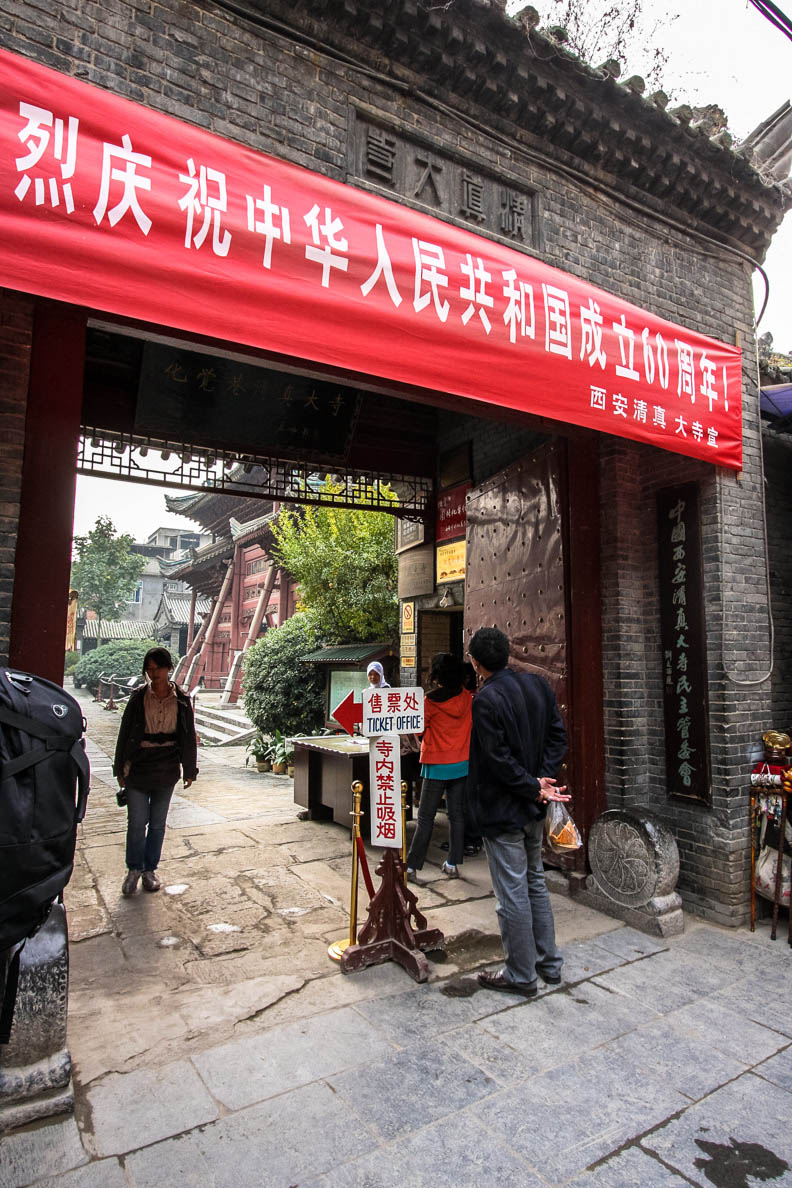
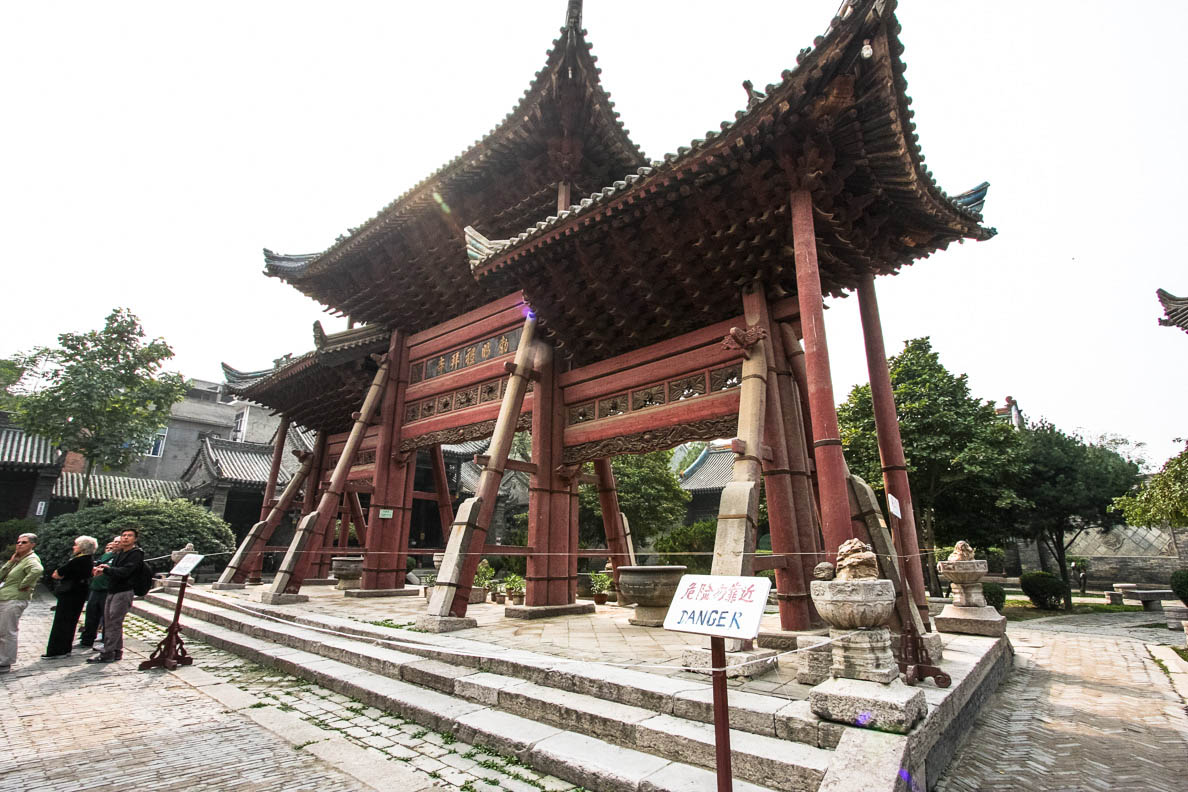
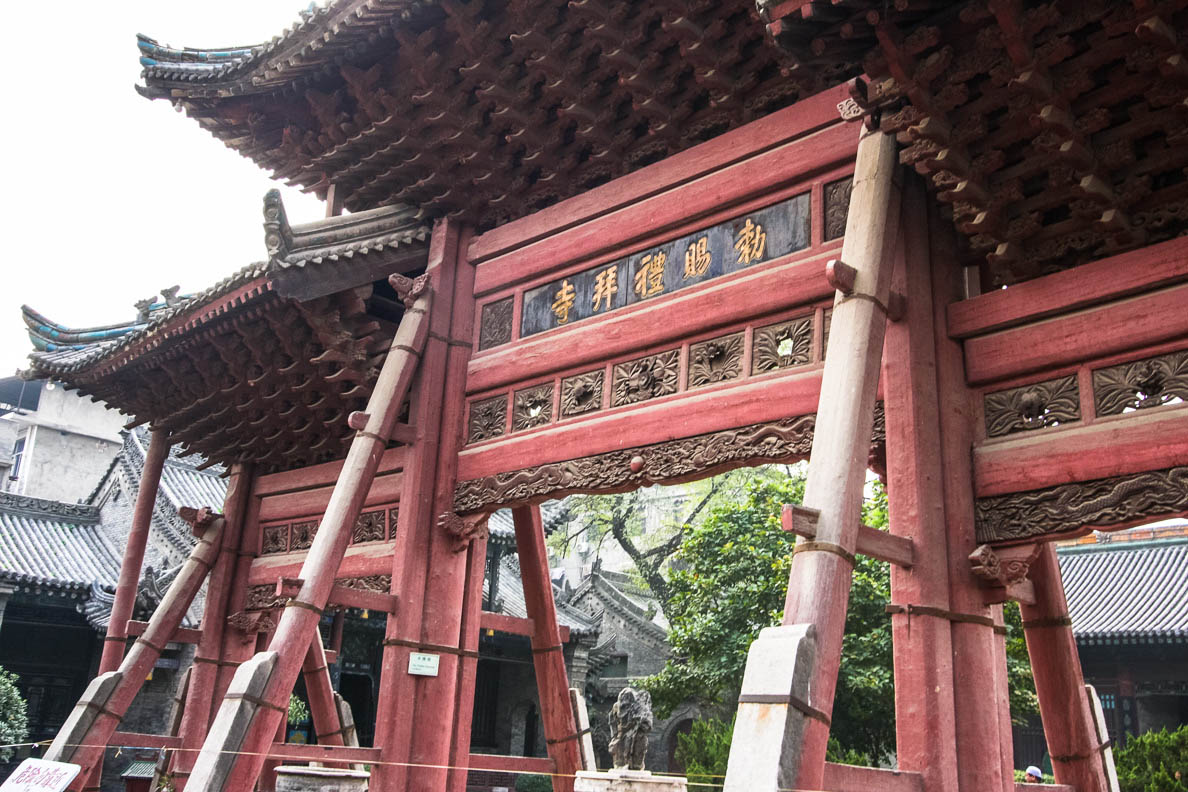
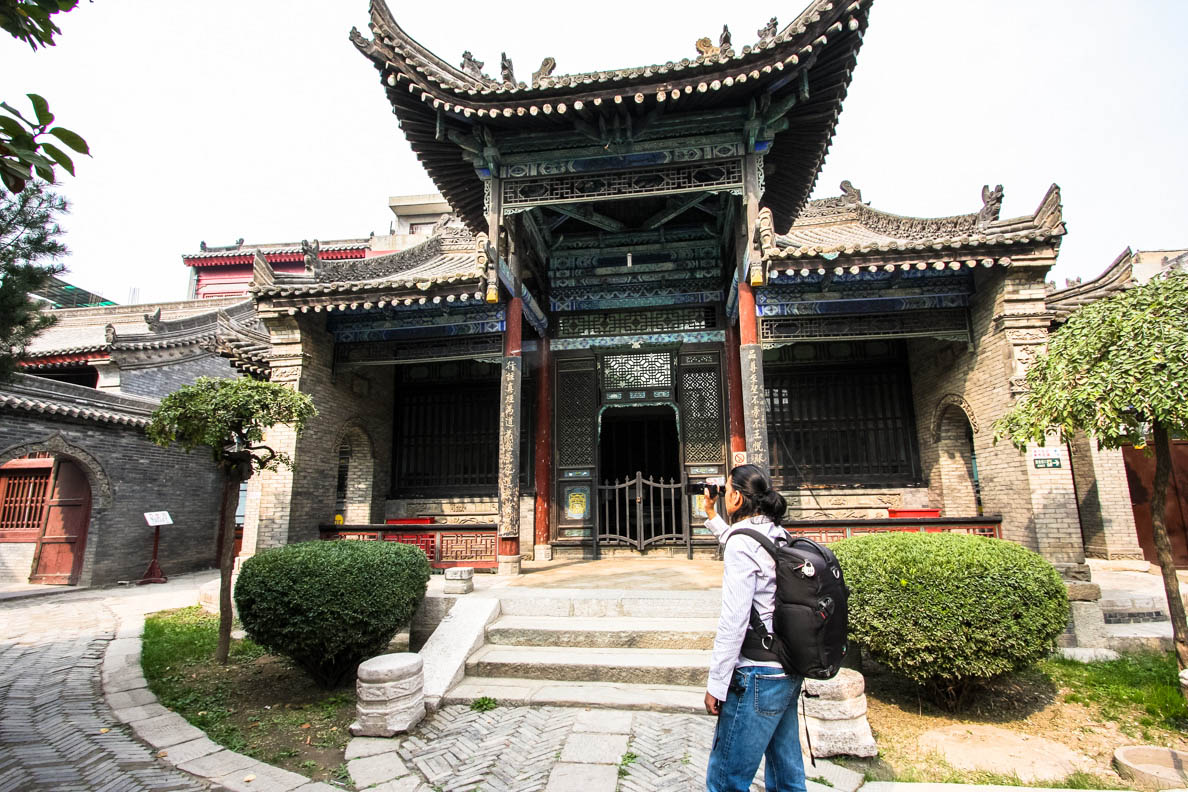
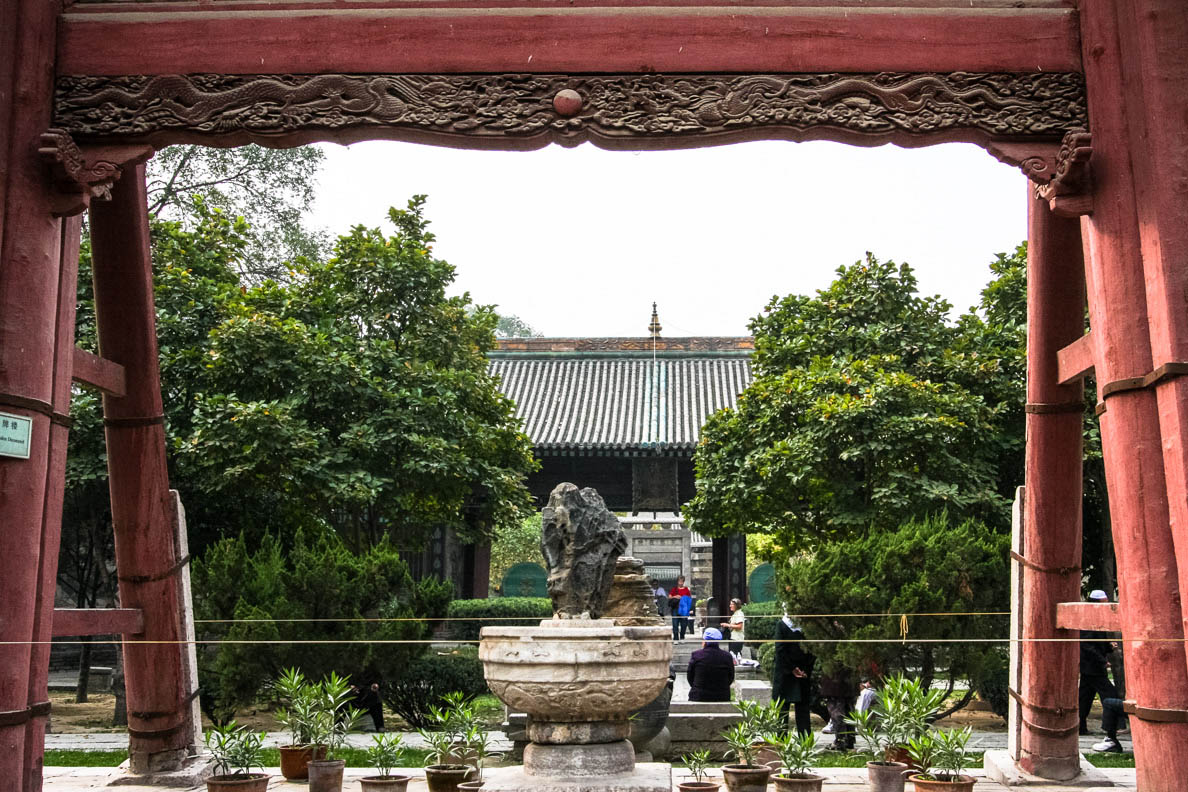
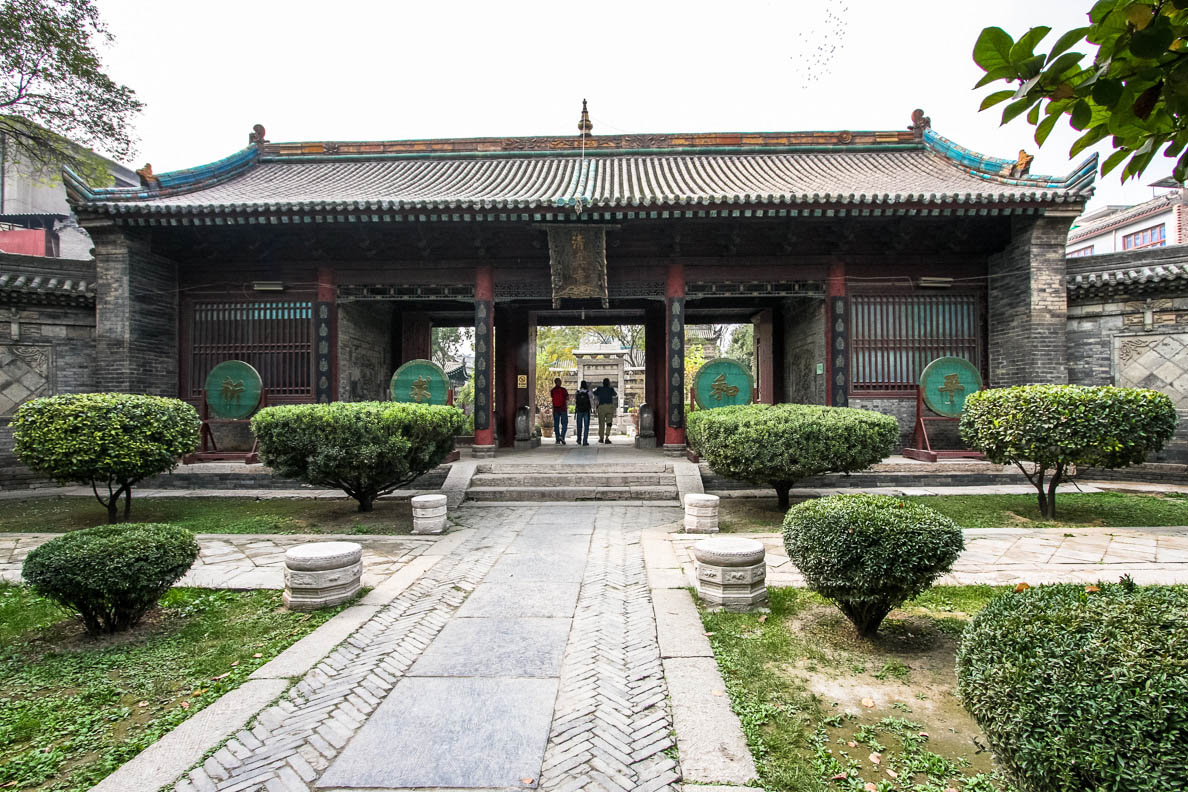
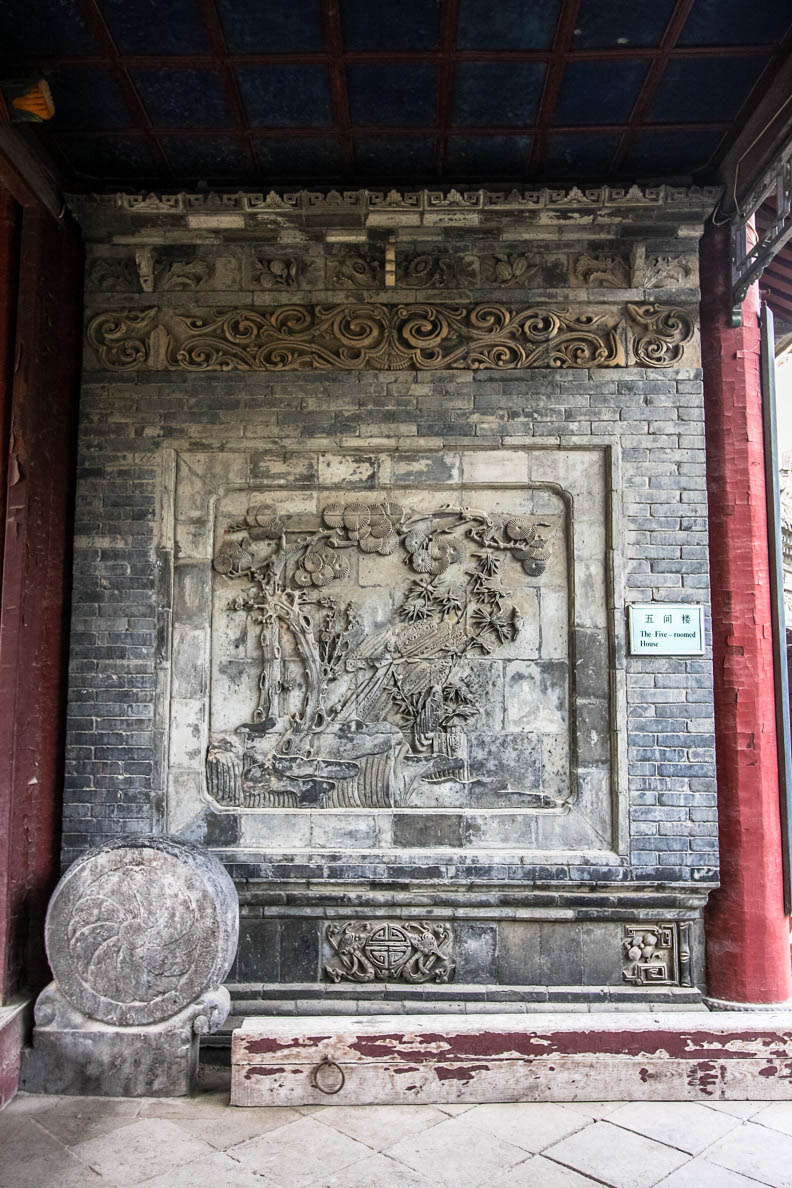
Court of Heaven
Courtyard II
Through onto the second courtyard and you are greeted with a three connected stone memorial archway from the Ming Dynasty. On the center archway it is inscribed with Chinese calligraphy “The Court of Heaven”. Behind this stand two steles. One features the script of a famous calligrapher named Mi Fu 米芾 of the Song Dynasty; the other is from Dong Qichang 董其昌, a calligrapher of the Ming Dynasty.
They also contain inscriptions about the repairing of the mosque during the Ming and Qing Dynasties. As you walk through the entrance of the third courtyard there are many other standing steles from ancient times.
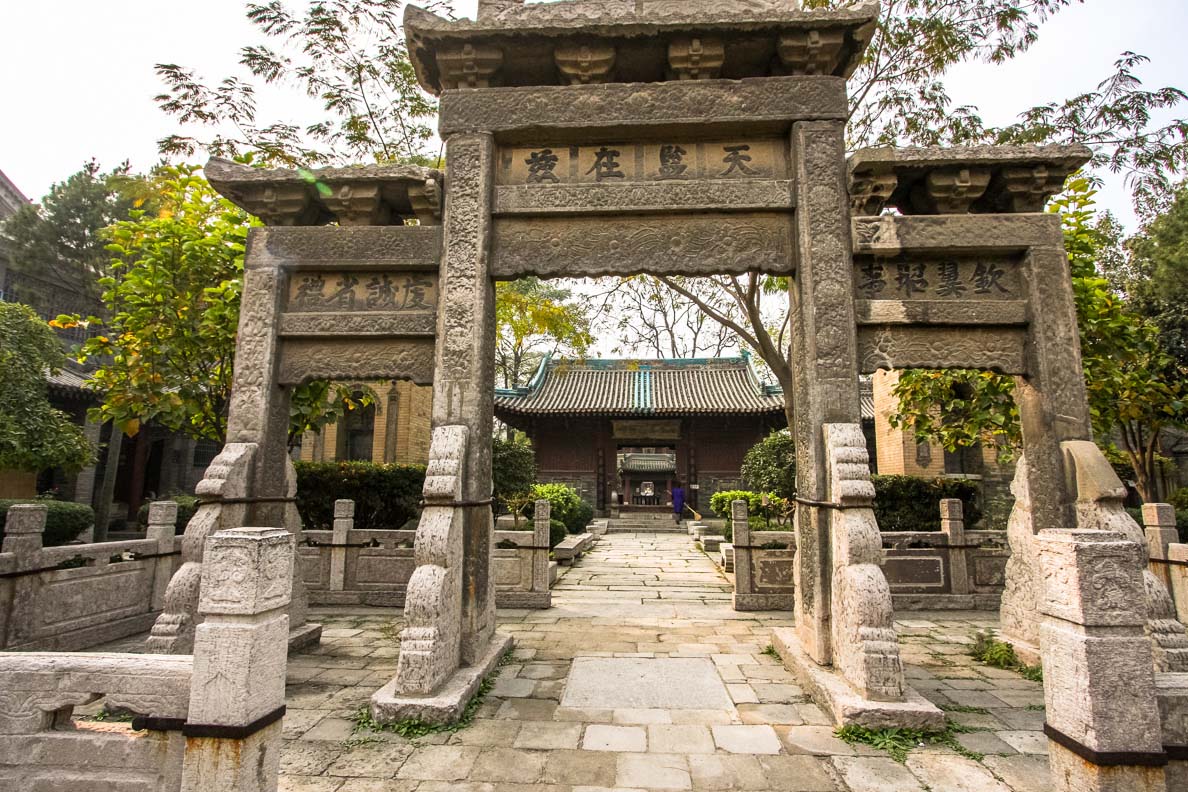
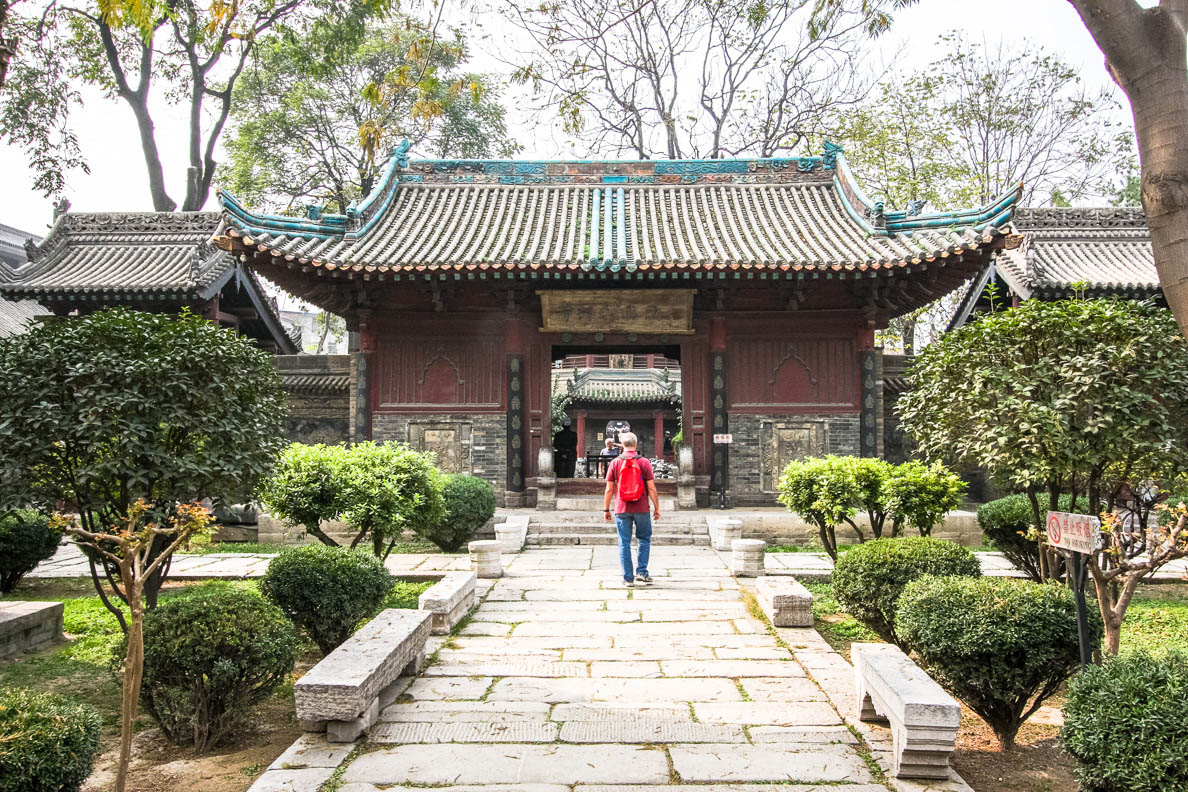
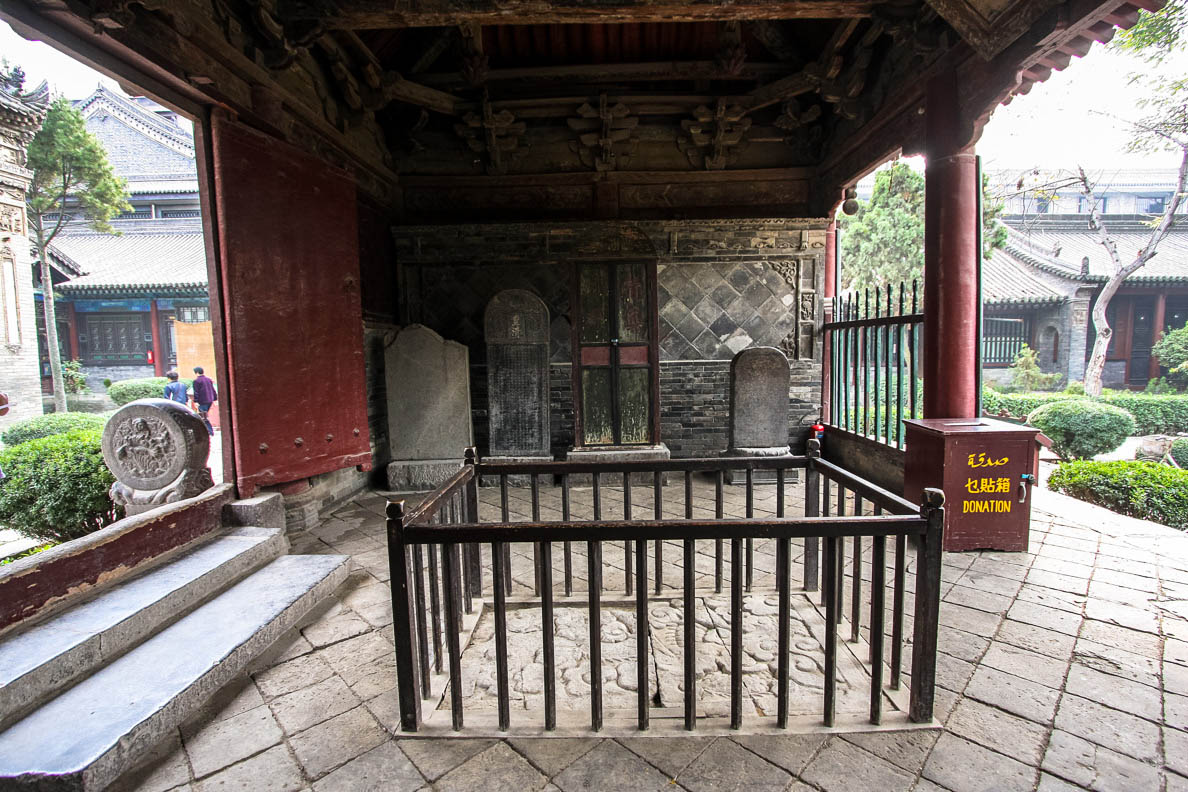
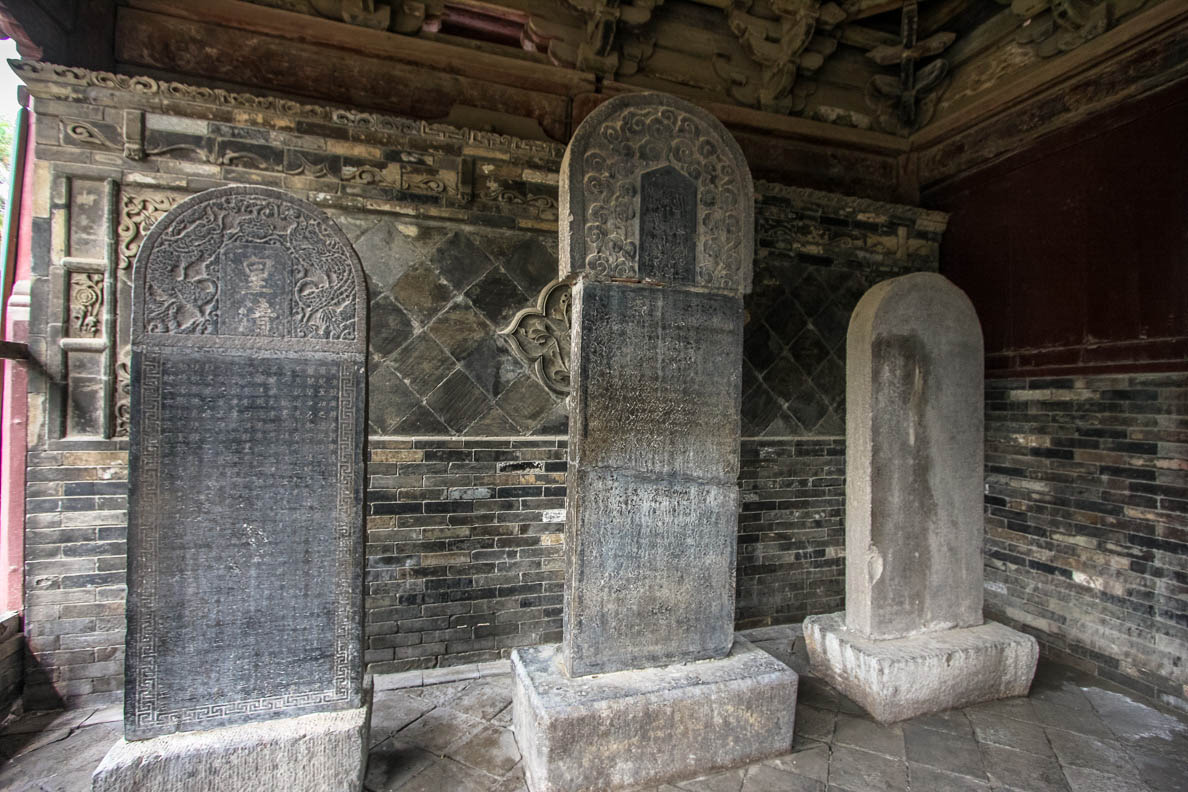
Place of Meditation
Courtyard III
In the center of this courtyard stands the Pavilion for Introspection 省心亭. The octagonal brick tower consists of three levels with Chinese styled eaves, decorated with small dragon heads . It is the tallest building in the complex and serves as a moon watching pavilion and as the minaret of the Mosque. Inside in the middle of the floor is a stone carving of two dragons. Again one feels like you are visiting a Taoist Temple then a Mosque. On either side of the courtyard (North and South) are other buildings that seem shut when I was there.
One building is the Imperial Hall which has the Moon Tablet — a stele that contains the methods of calculation for the Muslim calendar. This is a very valuable historical record about the development of Islam in this region. Another building is the Lecture Hall which contains a hand–written copy of the Qur’an from the Ming Dynasty and a map of the City of Mecca from the Qing Dynasty. The other buildings are a place for worshippers to perform the water ritual before praying and a library.
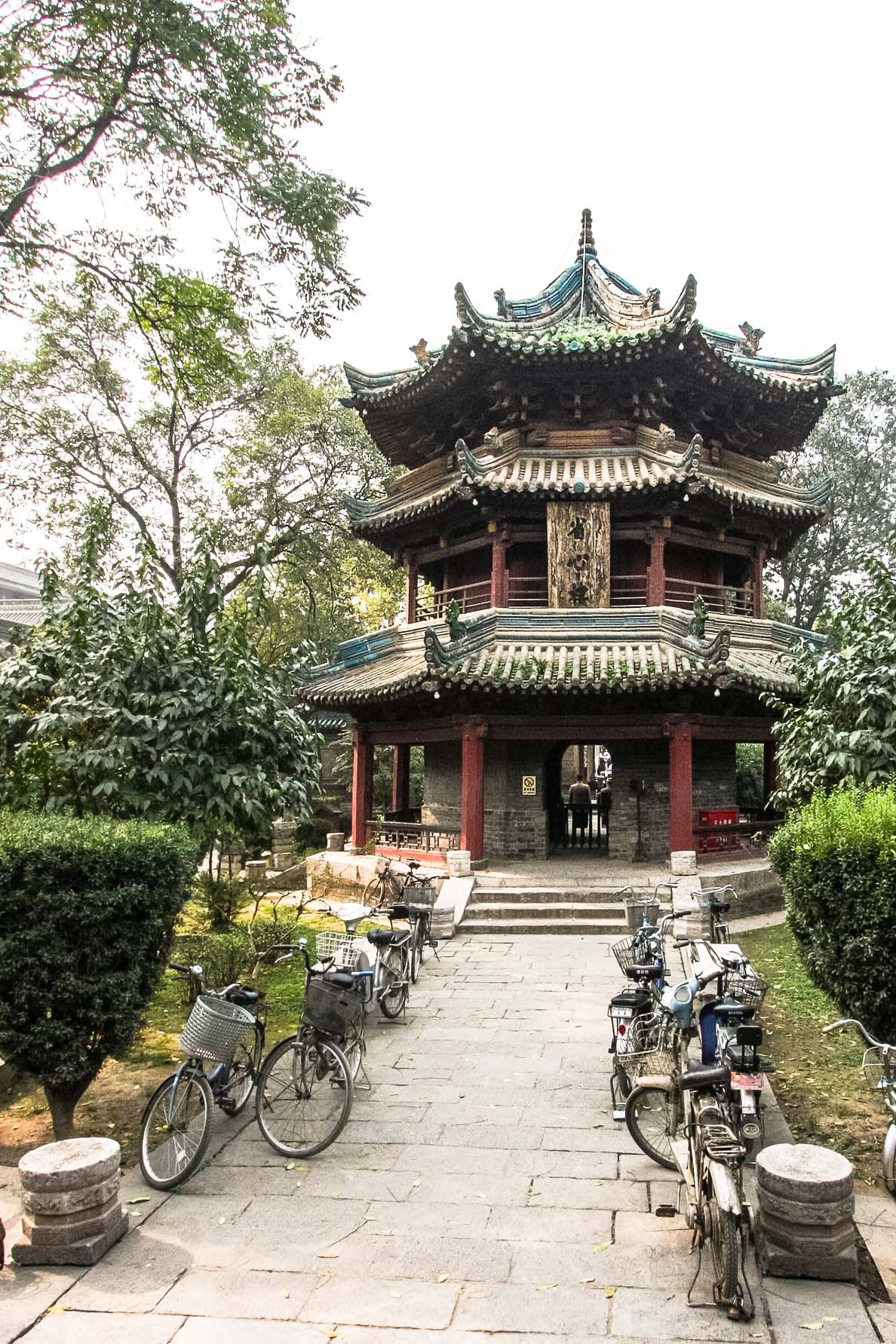
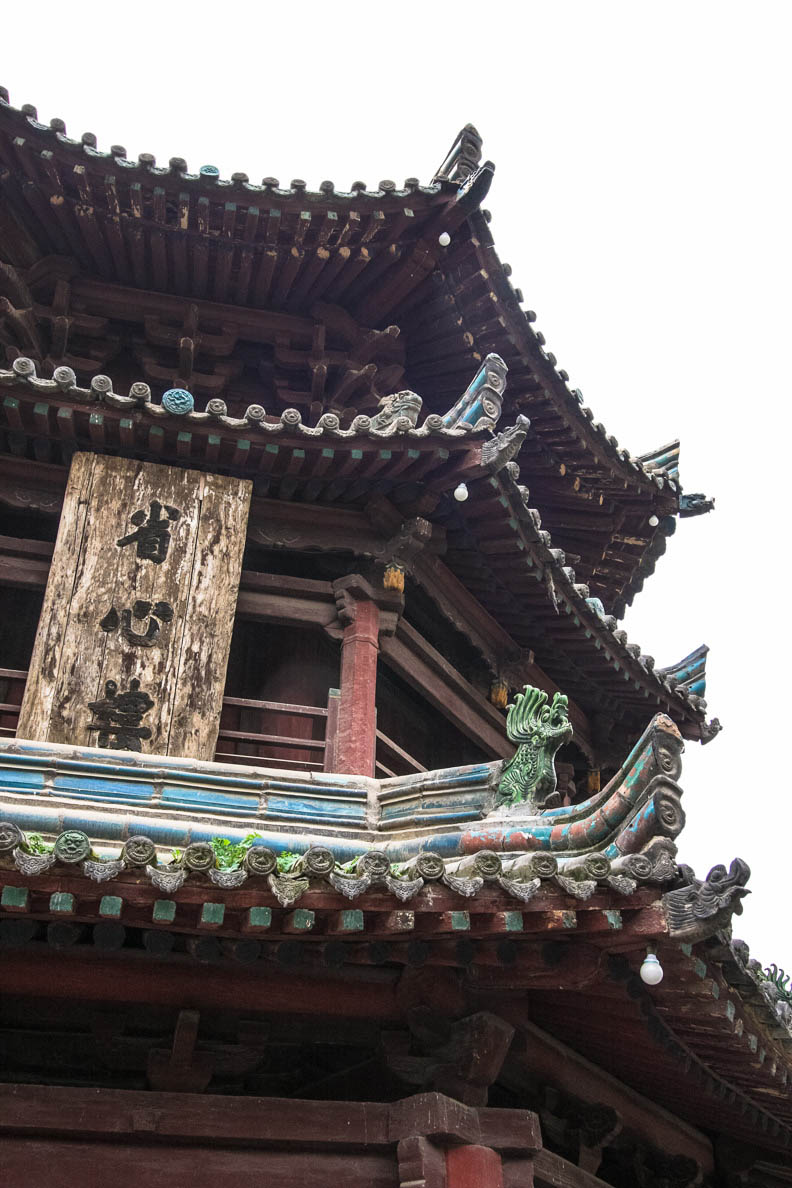
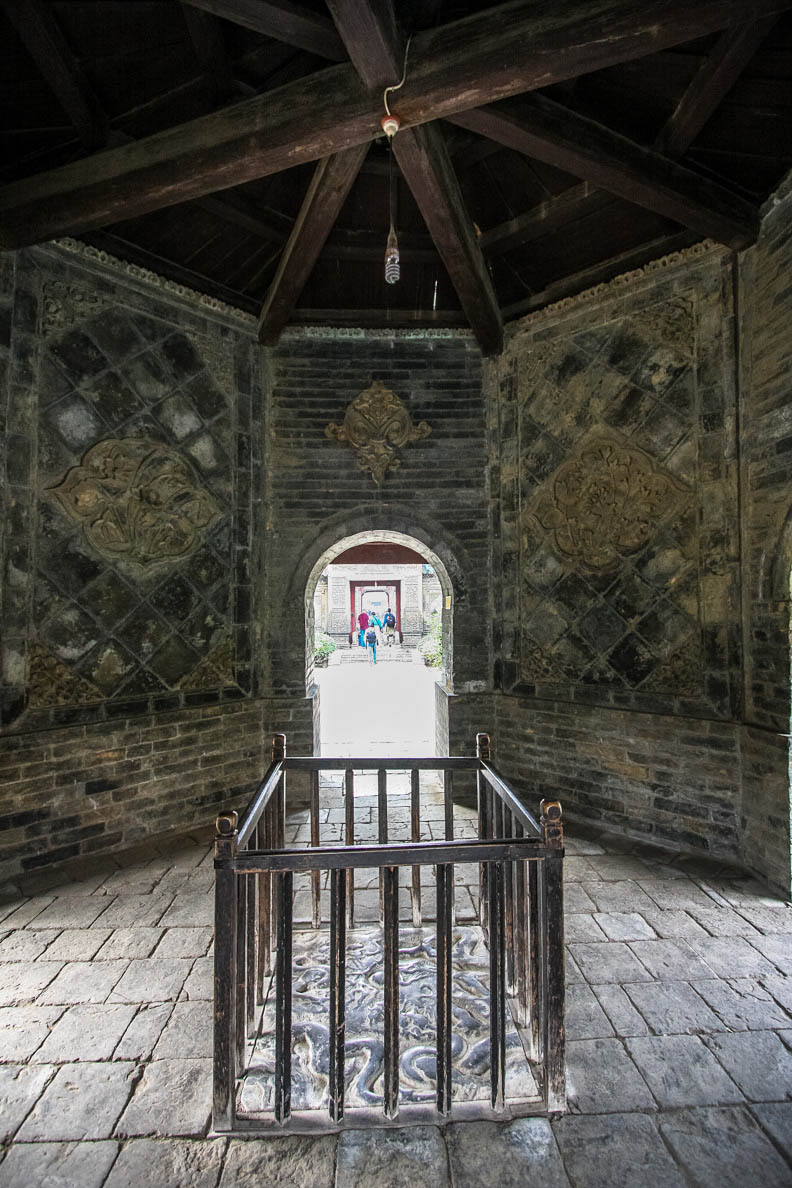
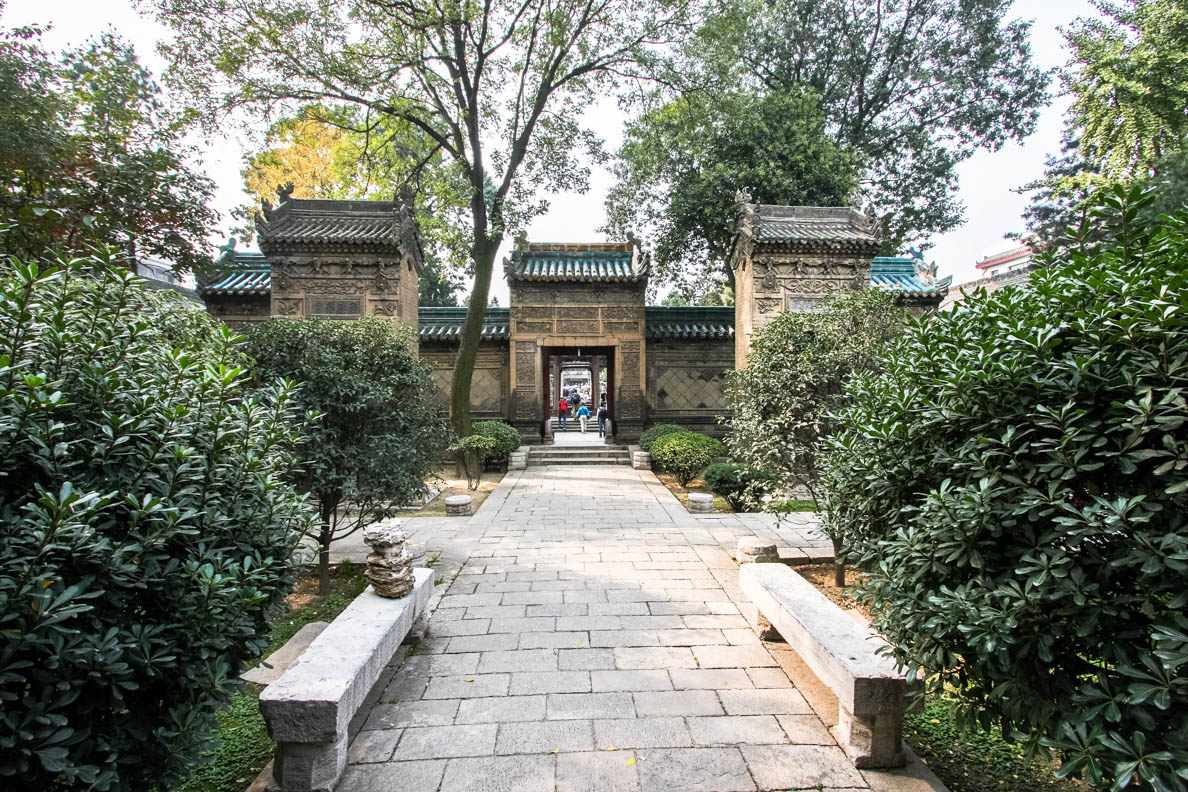
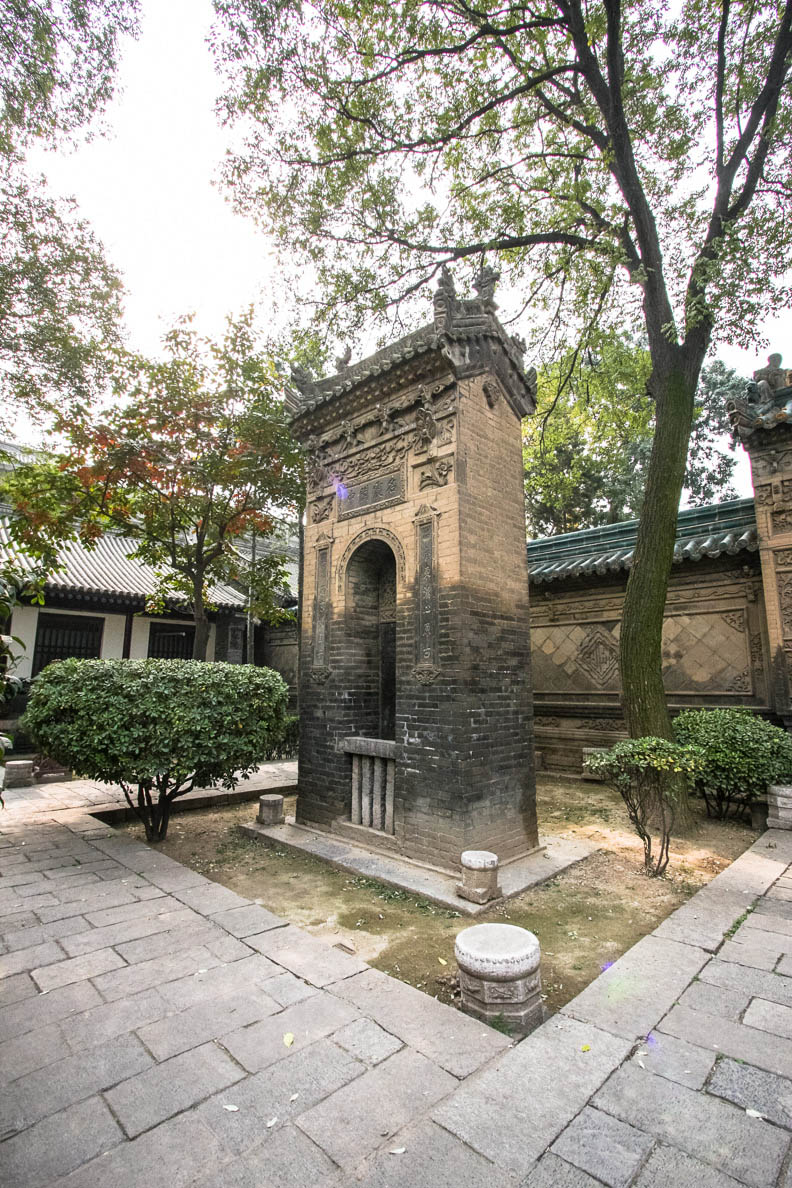
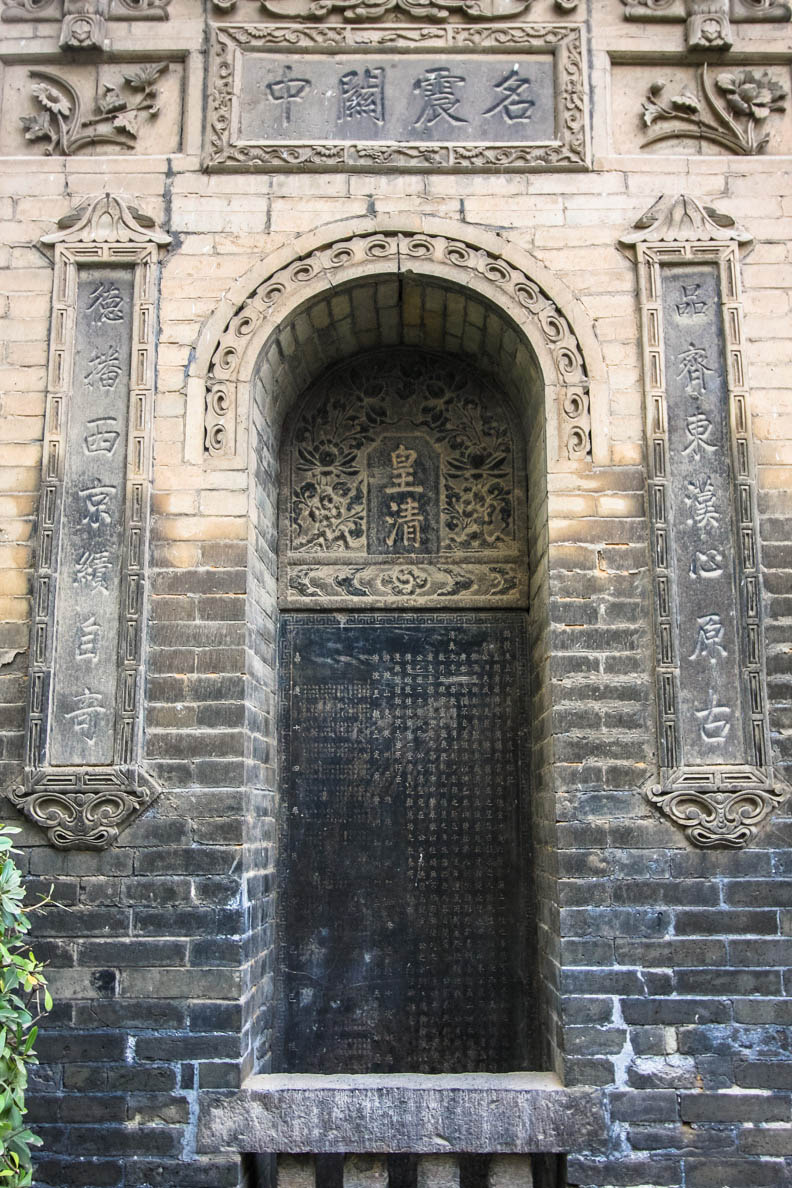
Phoenix Pavilion
Courtyard IV
You are greeted by the One True Pavilion 一真亭, or better known as the Phoenix Pavilion 鳳凰亭. This special building is a combination of a hexagonal pavilion in the center with triangular archways on either side. Thus, the structure looks like a Phoenix opening it's wings, hence the name. The connecting roof across the pavilion is again like the Pavillion of Introspection with the curved styled eaves with dragons.
A plaque written in mandarin hangs under the pavilion stating “One God”. Inside the pavilion is a stone table with four stone seats. Like in the third courtyard, there are buildings to either side containing historical and cultural relics from the Ming and Qing Dynasty. Also in the courtyard are other steles and what looks like two fountains that was turned off.
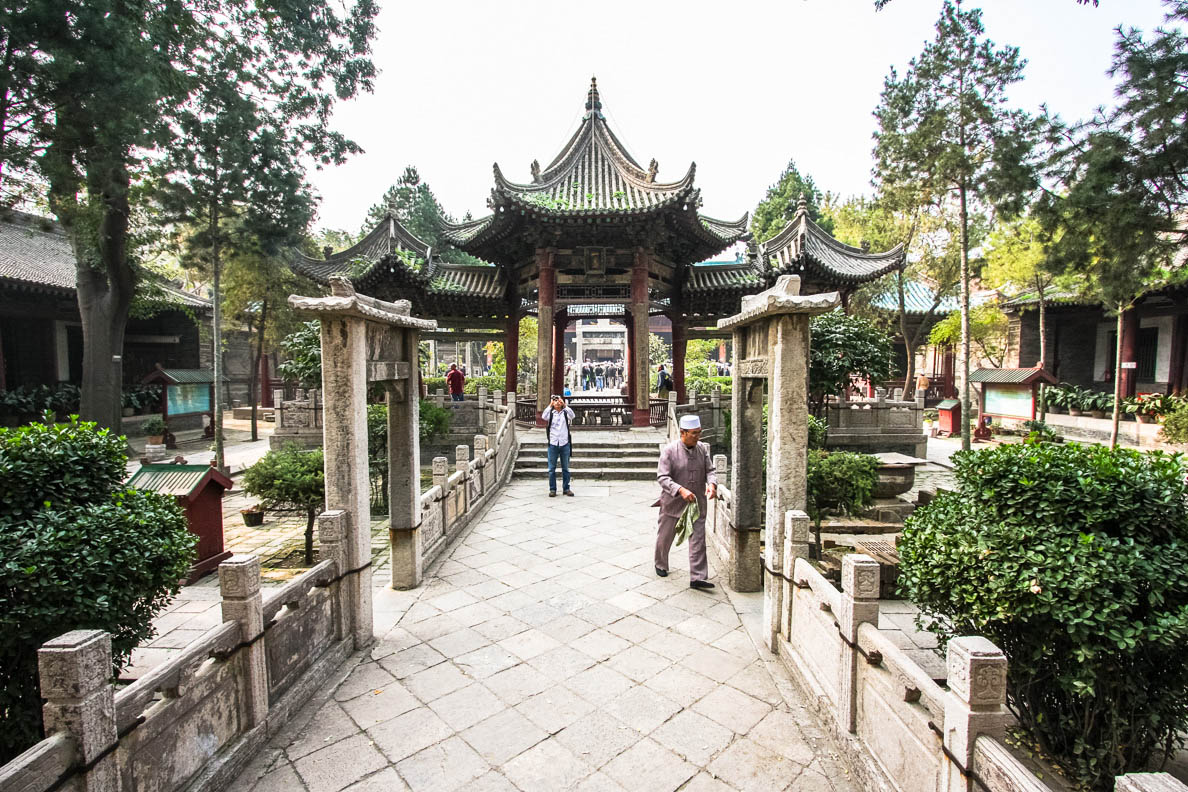
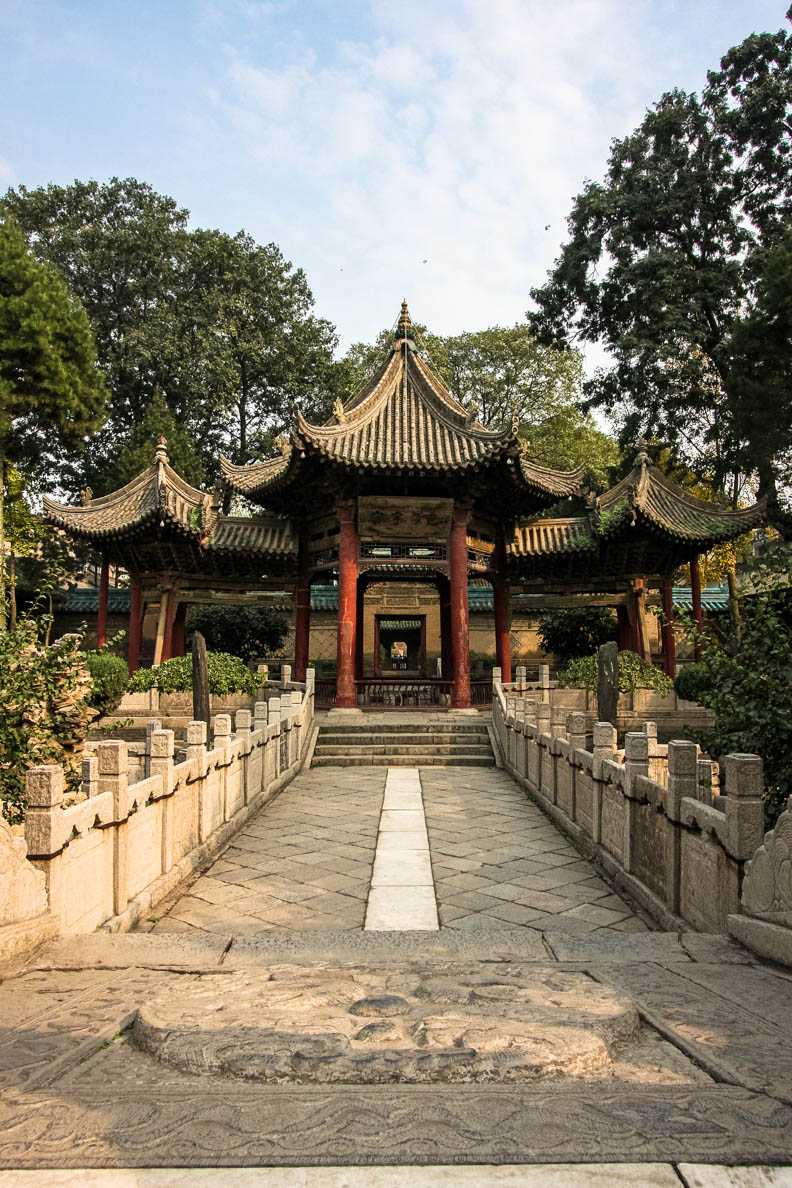
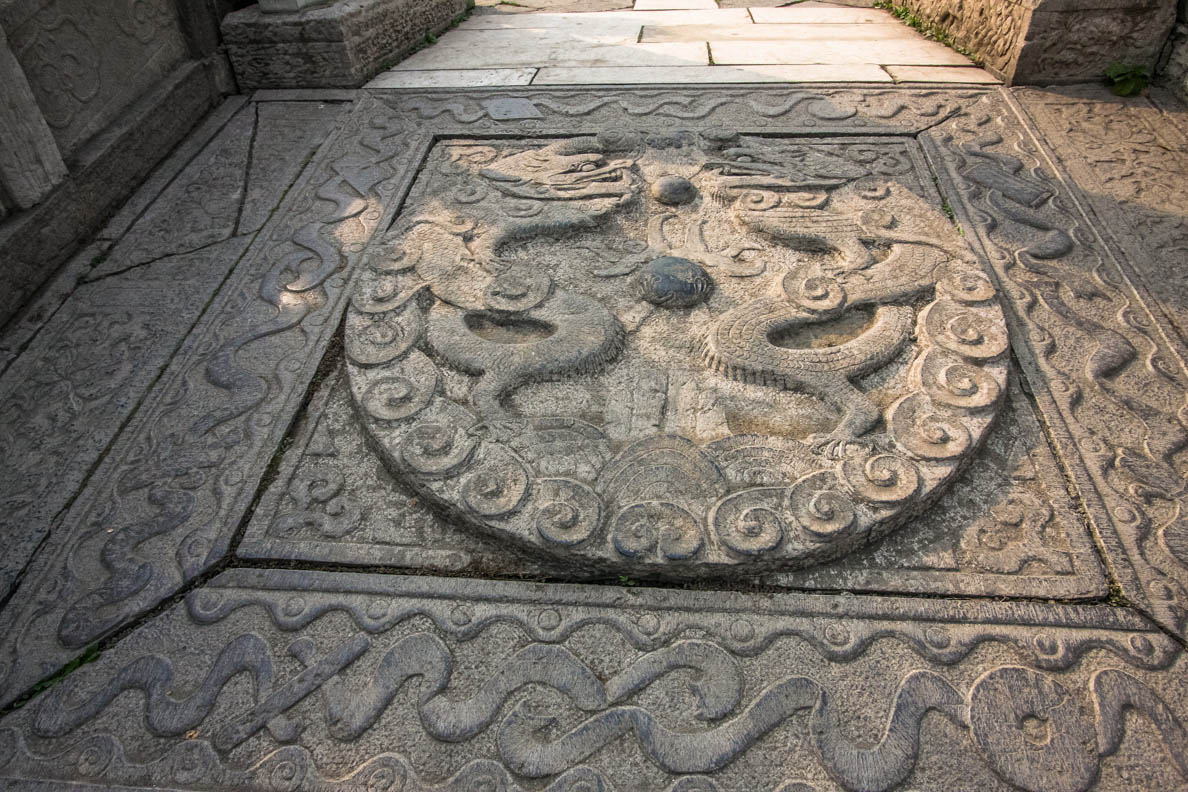
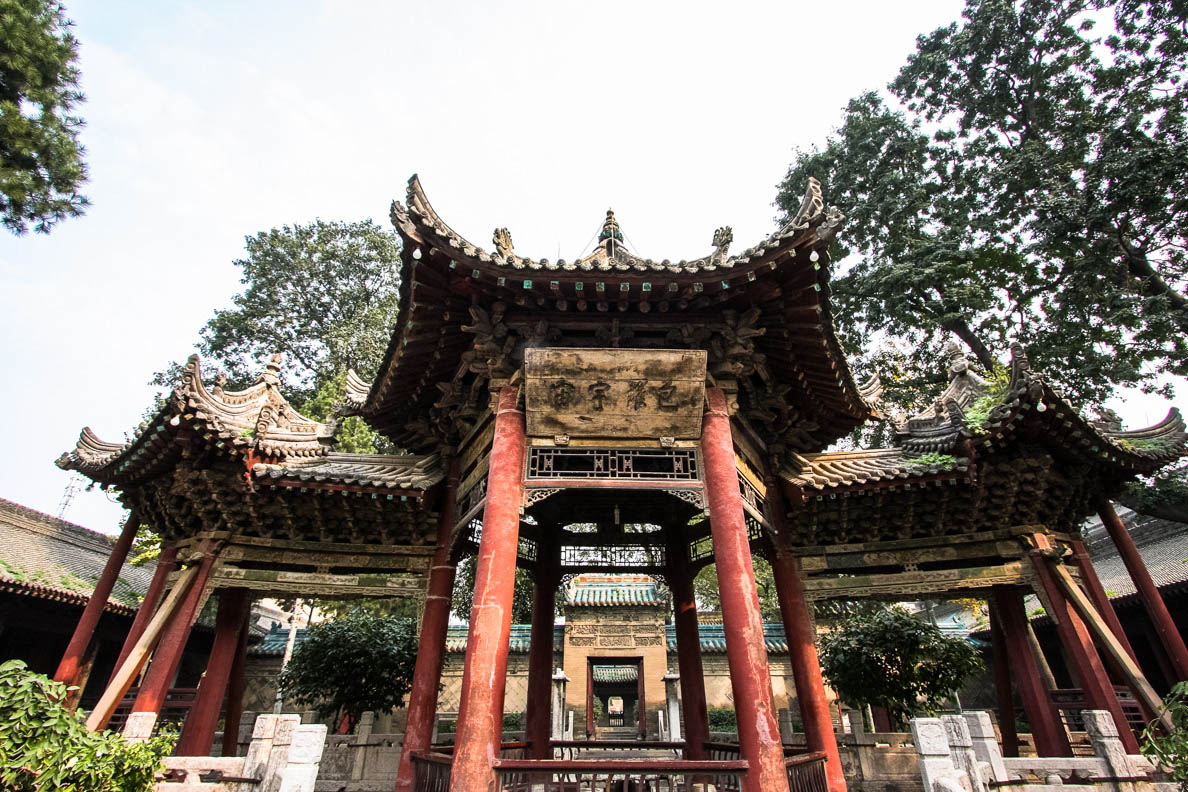
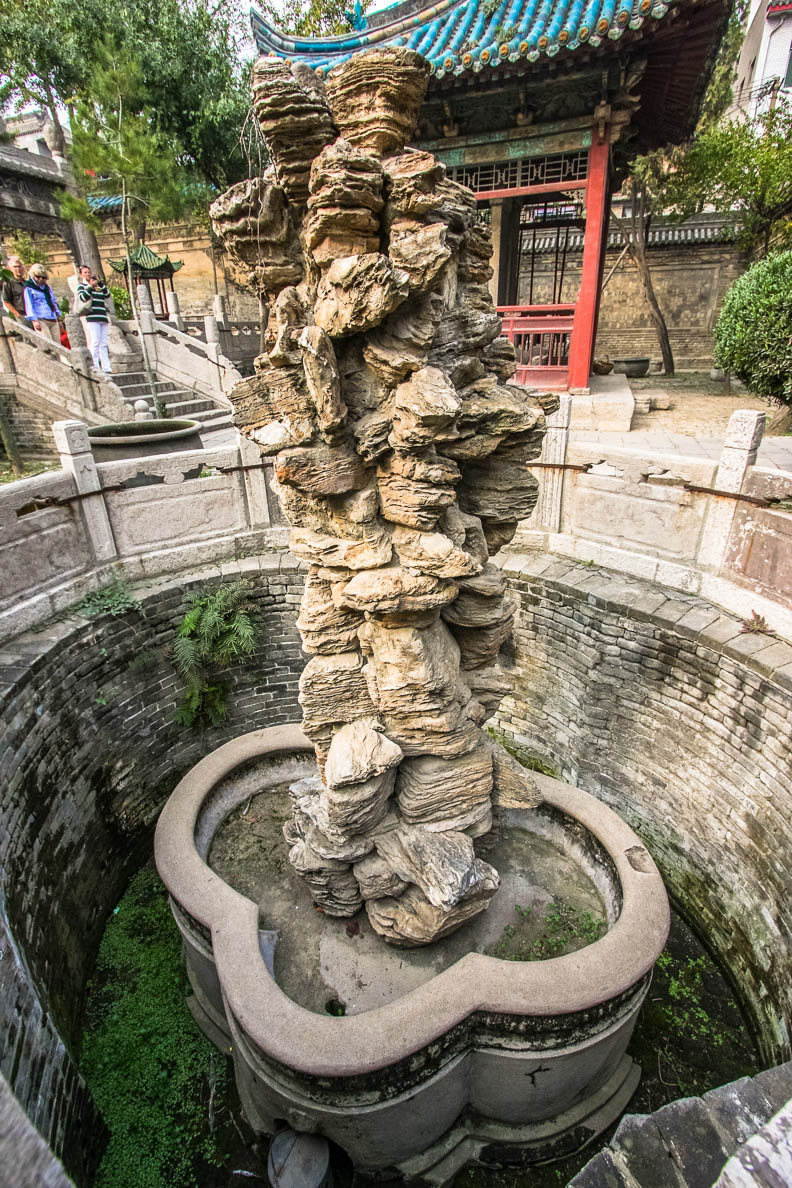
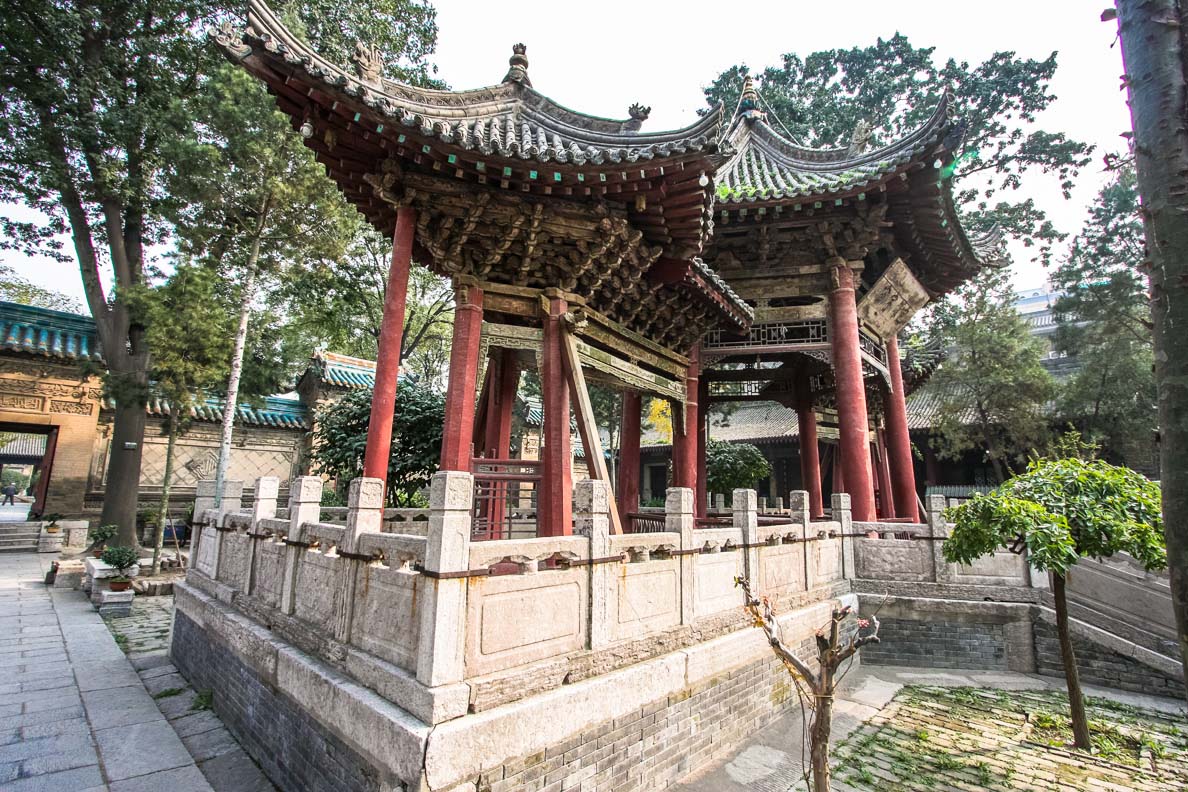
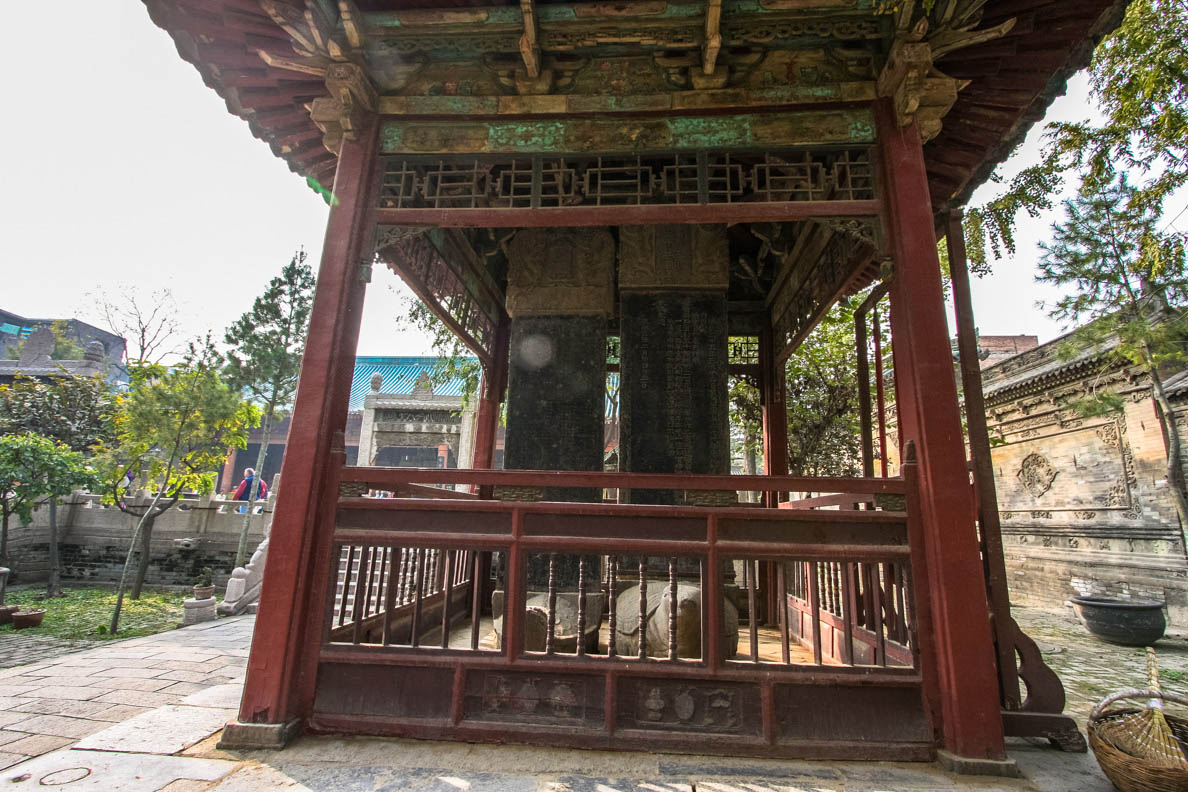
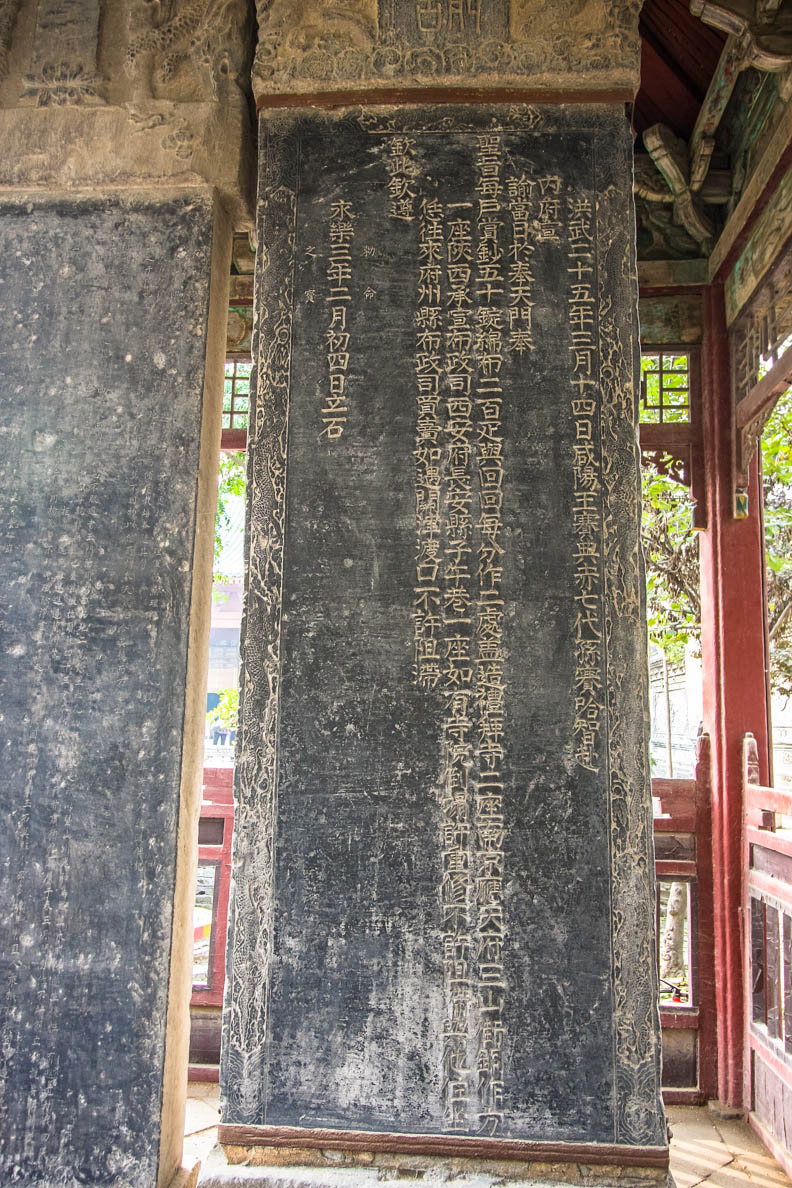
Did you know...
The first major Muslim settlements in China consisted of Arab and Persian merchants during the Tang Dynasty in 618 AD. They arrived through the Silk Road or the overseas route through the port of Quanzhou 泉州市
